Lounging ’til half past noon, we then went out to Quo Vadis (the Irish bar) for a bit of lunch. Niamh had a Milanese escalope with fries, and I had peposa (black pepper beef) and a side of beans. Niamh’s was lovely… mine was ok… I was expecting the stew to be a little richer. I think the strategy going forward will be to only try stews in places with much smaller (or daily) menus. The Guinnness was nice, though!
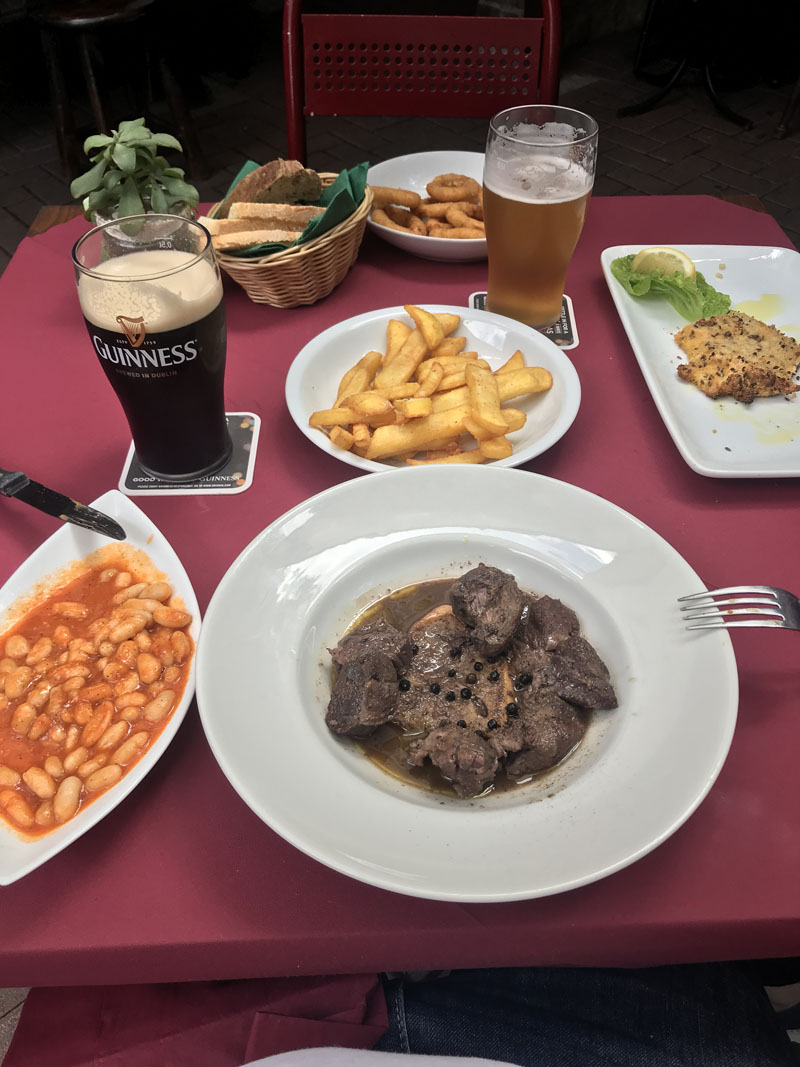
After lunch, on the way to the cathedral, we stopped off at a little courtyard we hadn’t been to before.
The cathedral itself (as I’ve said in other blogs) is newly re-opened and very humble looking on the outside, especially when compared to cathedrals in Pisa, Lucca, Siena and Florence. The inside is pristine, and houses some amazing artwork. It’s dedicated to Santa Maria Assunta (edit: I had originally said Saint Linus, the second Pope, who was born in Volterra – my mistake!)
I hope to visit Palazzo dei Priori over the next couple of days – the two of them were built back-to-back for historically political reasons – more to be revealed in that blog. The layered marble adorning the inside is, in fact, faux – it’s been painted – but still looks fab. The layered marble in sections on the outside is the real deal – and designates that the building is religious in nature (in the Pisan-Romanesque style).
I stopped off for a lovely caffé milkshake on the way home, where I vegetated for the afternoon.
That evening, we went to La Terra di Mezzo for a fun time with the gang there, and to have some food, of course. It was a year to the day that Niamh and I turned up in Volterra for the second time, and Niamh’s shoulders were stiff from anxious driving, so the restaurant owner gave her a massage – and a worryingly good one it was too. He remembered that, and also that he refused to massage the glutes I said were also sore!
Anyway, we had a little amuse-bouche of pecorino with what I think was homemade chili jam – amazing! Niamh then had carbonara with smoked pancetta (or guanciale – I didn’t ask), in a herb sauce. I had tagliolini with white truffle. White is even rarer than black, is less aromatic and more delicately flavoured. It was the first time I’d had it, and the restaurant owner held a bag of them under my nose. Yum! The dish itself was nice – the truffle delicately flavoured; a bit woody. I think I prefer the black, though – their dish of papardelle with pancetta and black truffle in a lemon ricotta sauce is a much better plate – one of the best pastas in Volterra.
You may note the lack of photos – sorry! I was too caught up. We had dessert – Niamh a chocolate soufflé and I some apple strudel. We were given shots afterwards – limoncello for Niamh and grappa for me. The grappa, while strong, goes down smooth here. I was offered a second one, but got a shake of the head from Niamh.
Instead, we said our goodbyes and strolled a minute up to Antica Velathri Cafe for a cocktail each. I know I’ve said it before, but the dude is a good mixologist! Niamh had a bellini, complete with crushed peach, rather than just juice. I often ask him to invent something for me, giving him a base flavour. I asked him again to invent something with a coffee base. We were waiting for our cocktails as long as we were for our first courses, but it was worth it.
He came up with Niamh’s super-looking bellini, and something under a transparent cover. He had put together vermouth, gin and kahlua over ice, and smoked it with pine wood. Bananas! But it tasted of coffee, botanicals and woody smoke – I loved it. He only charged us €10 for both cocktails together, and we also bought a few small almond cookies baked in-house.
Today we hope to go out to visit a couple of towns. Hopefully more on that tomorrow!

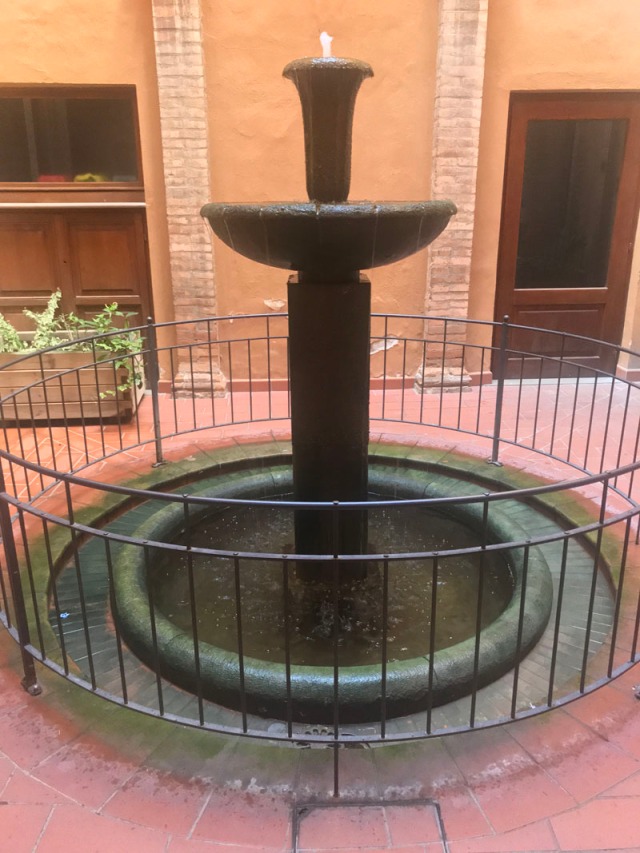
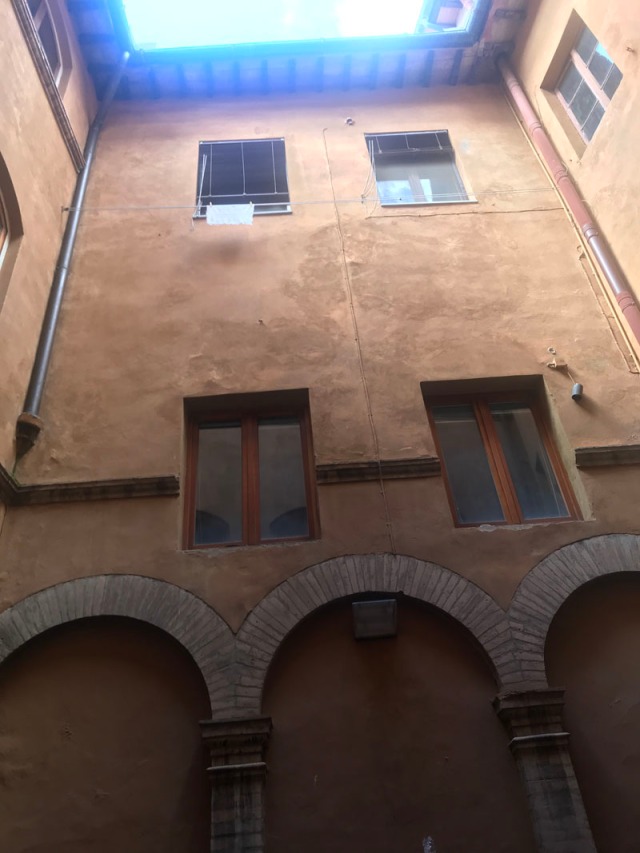
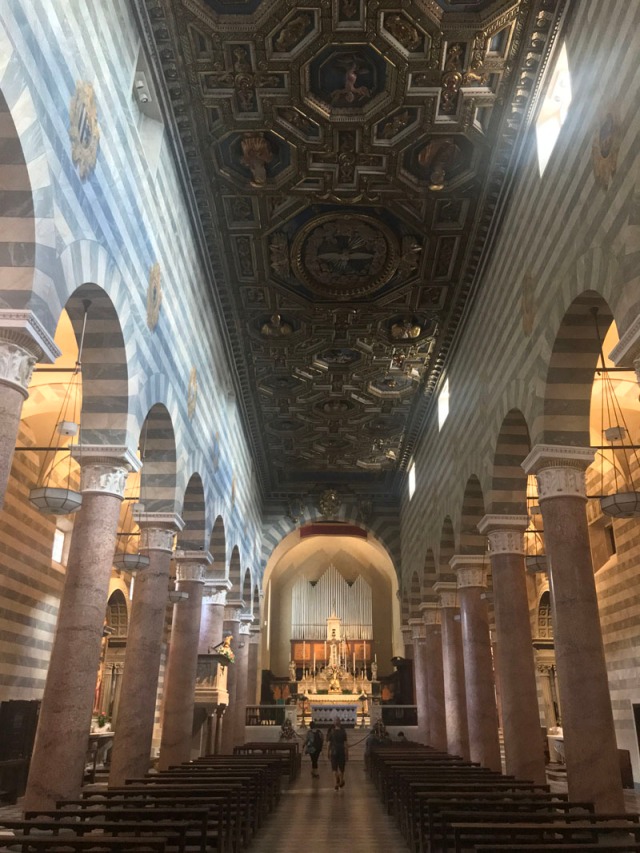
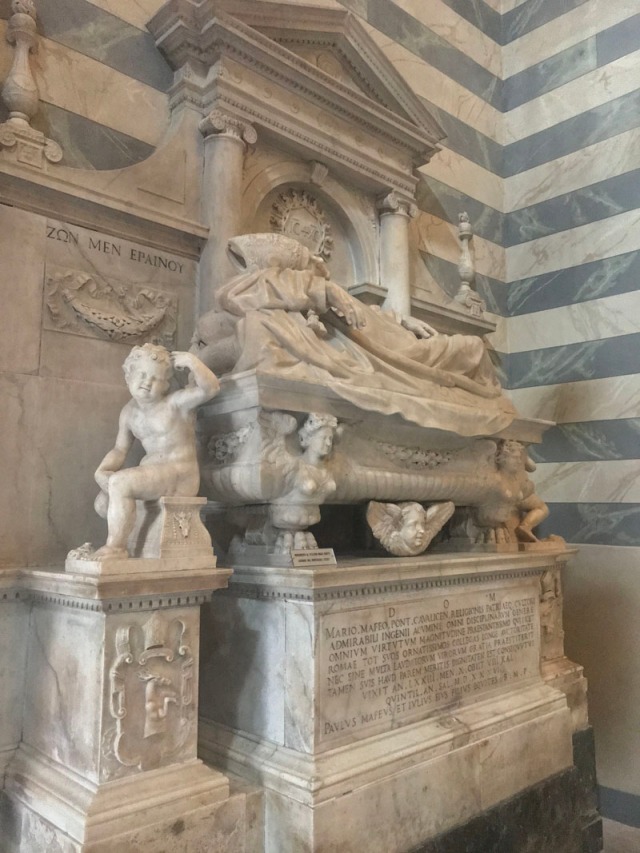

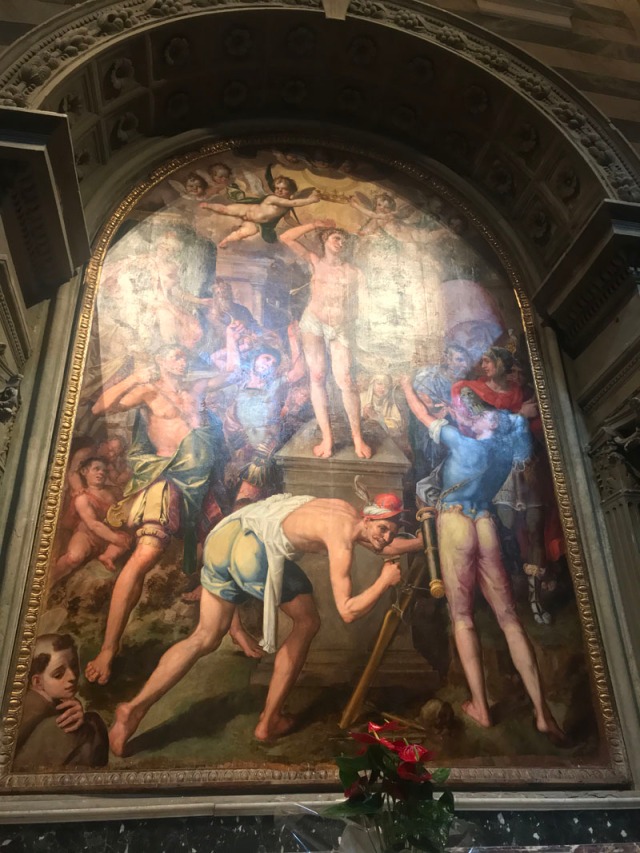
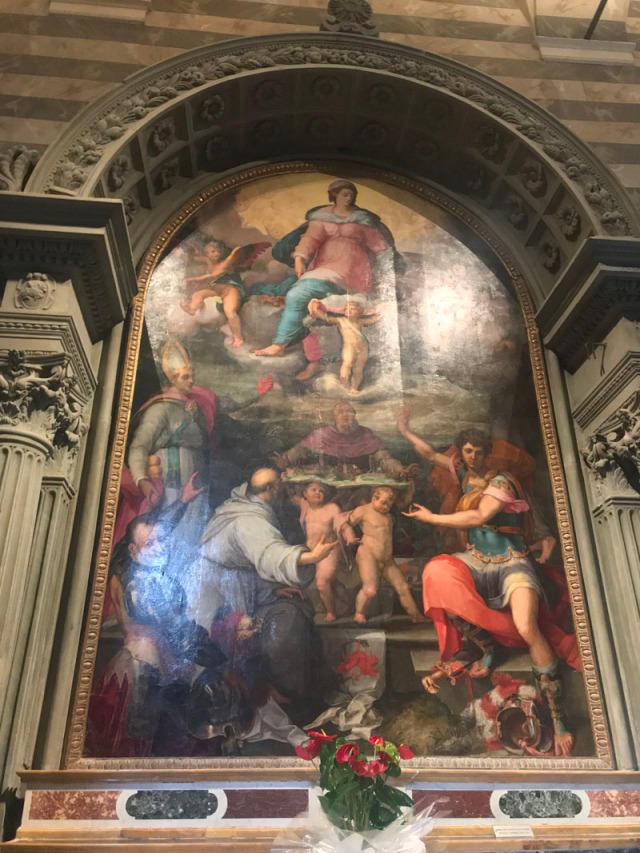
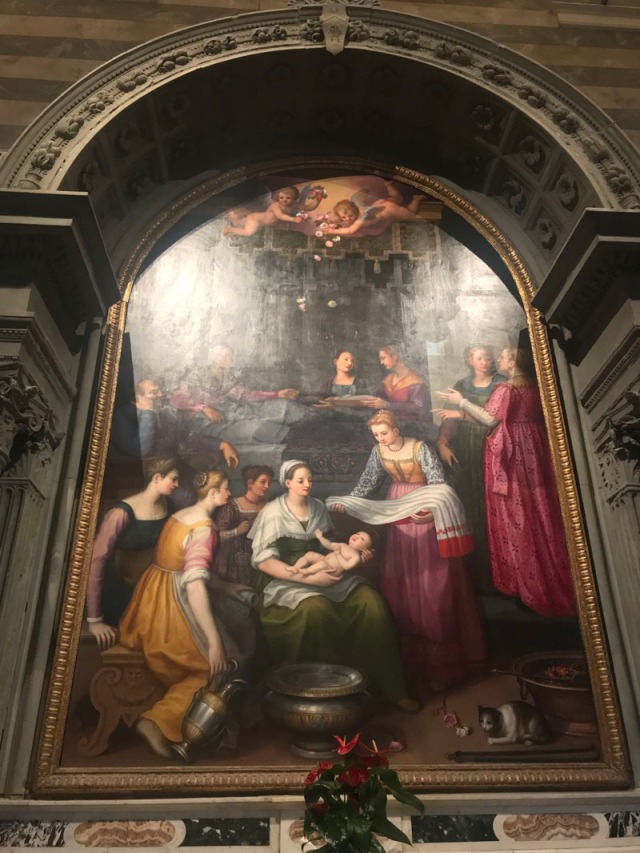
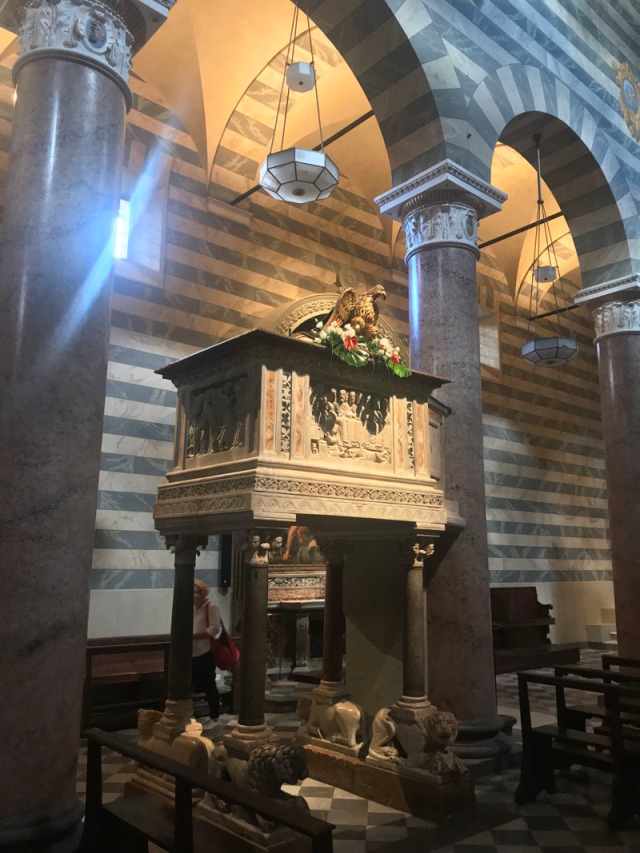
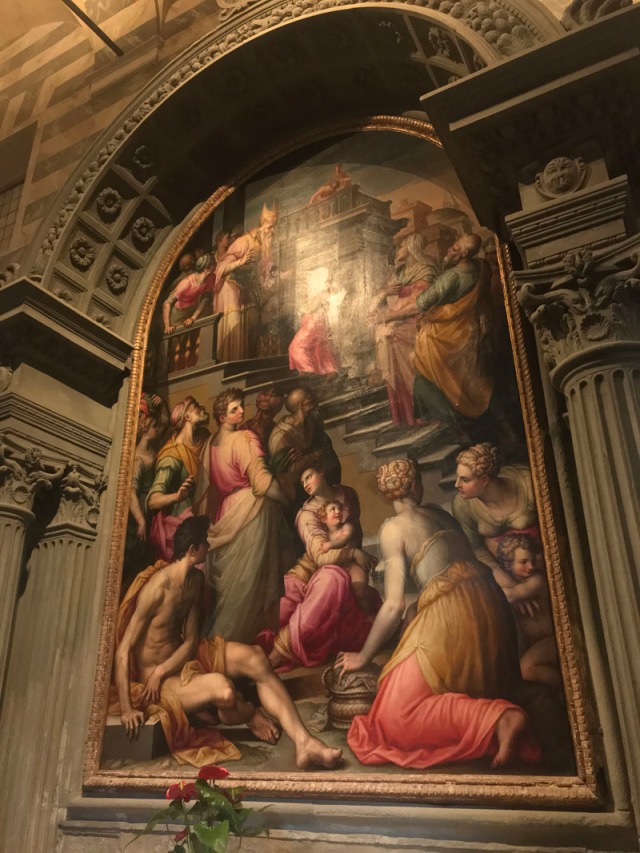
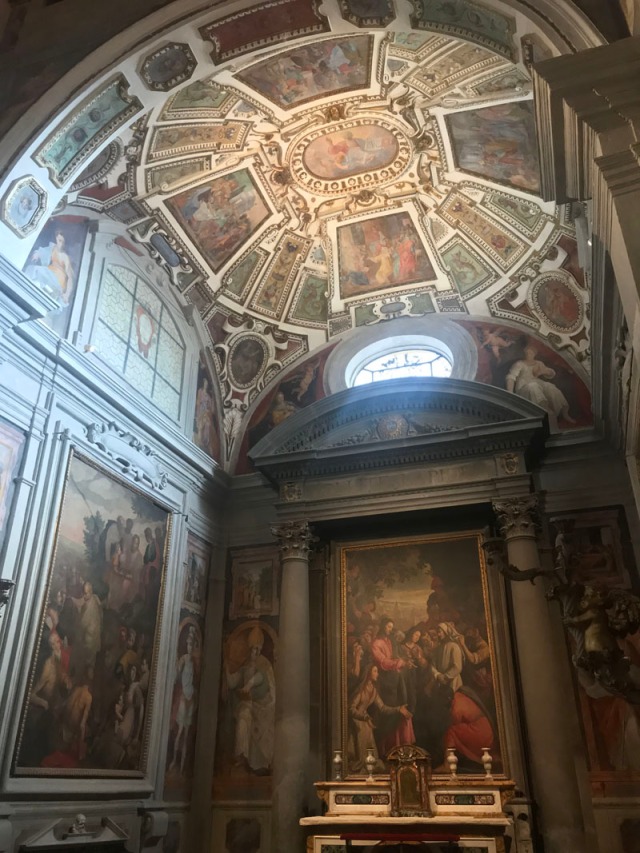
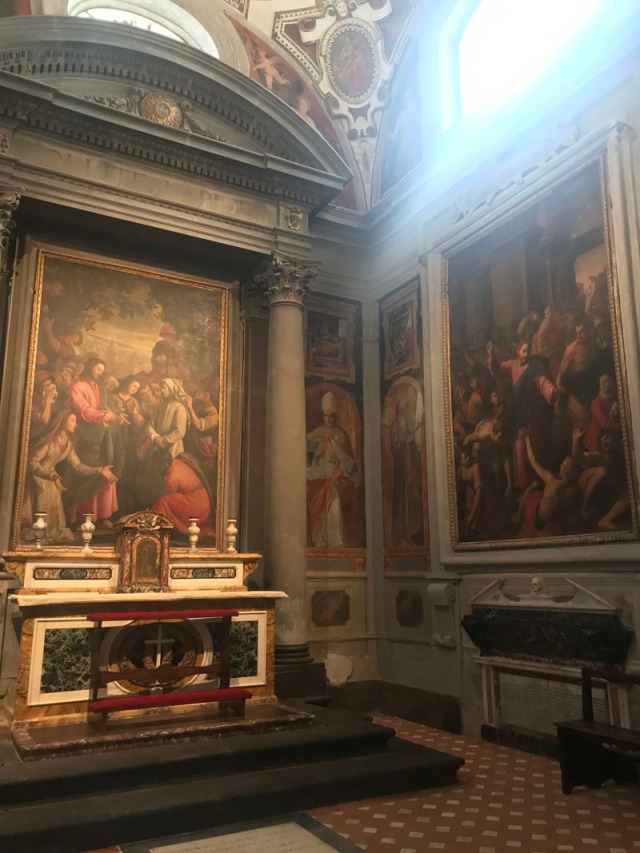
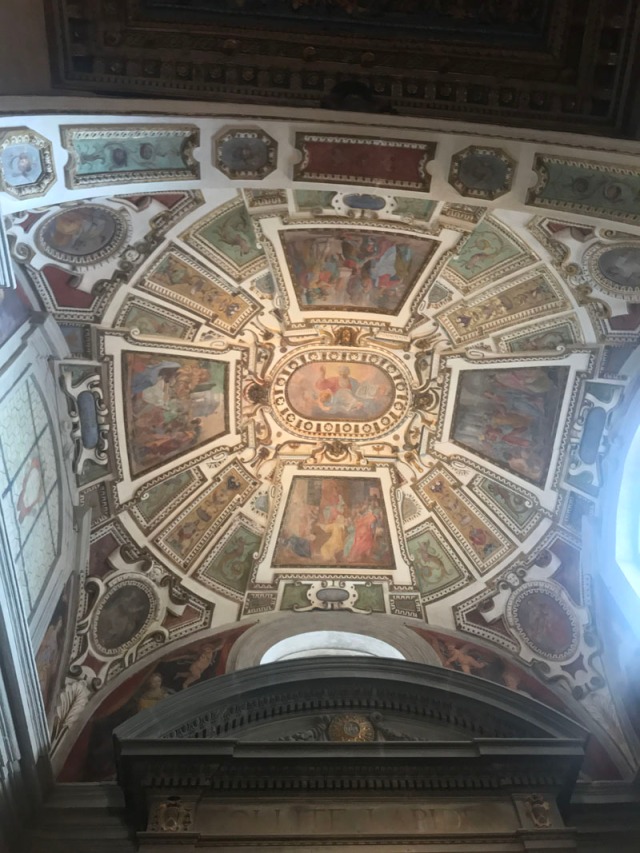
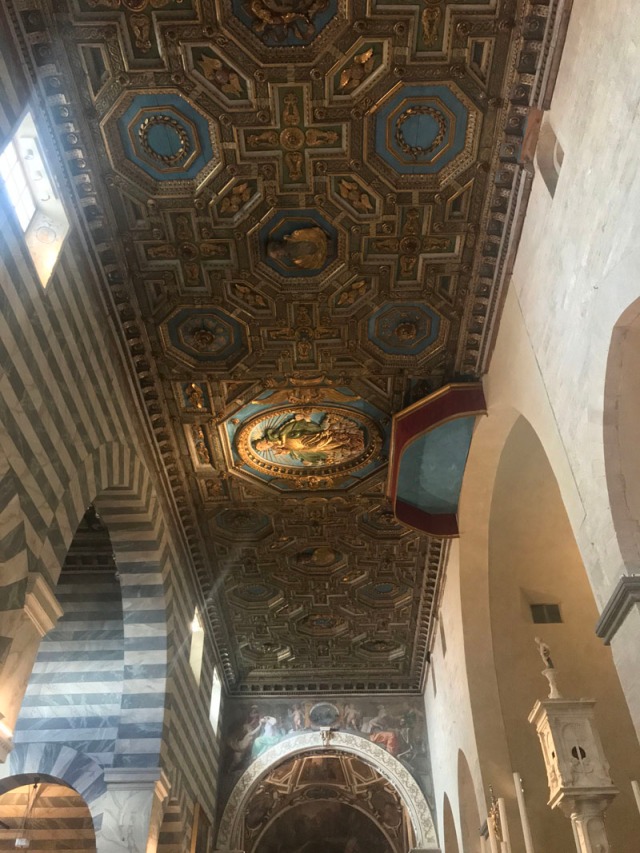
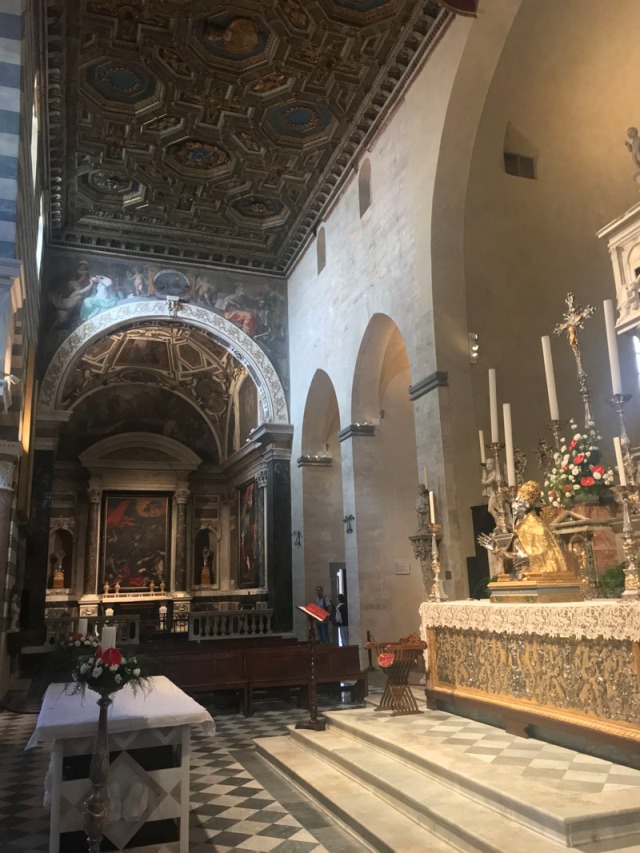
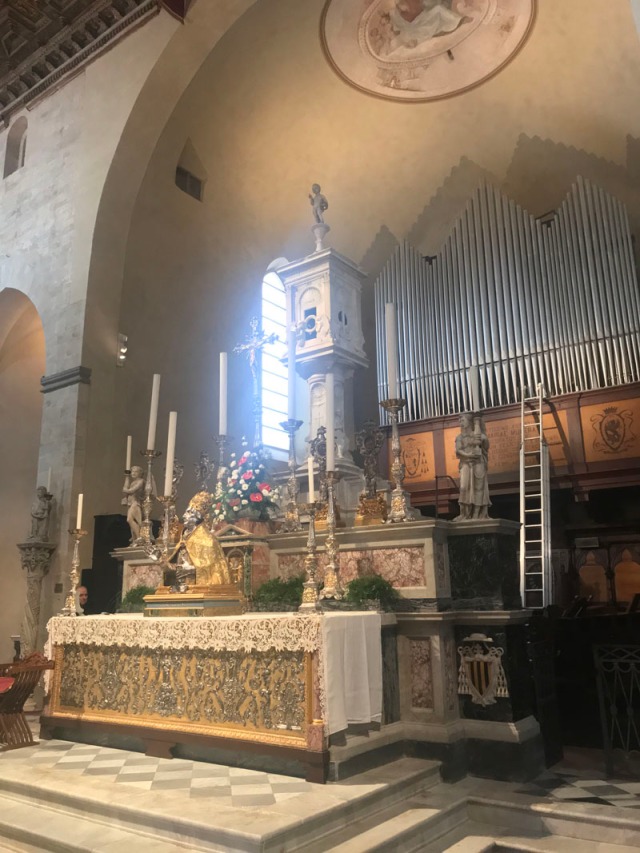
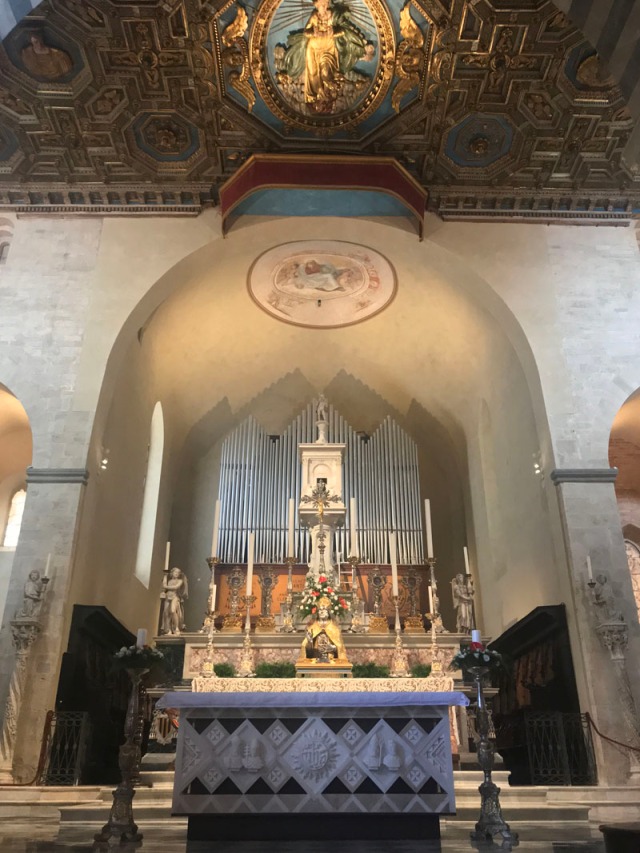
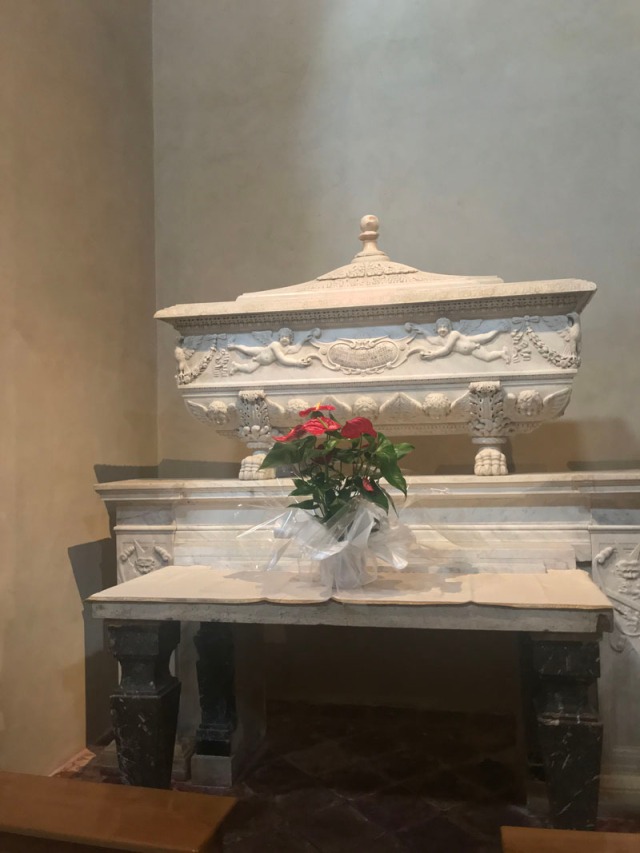
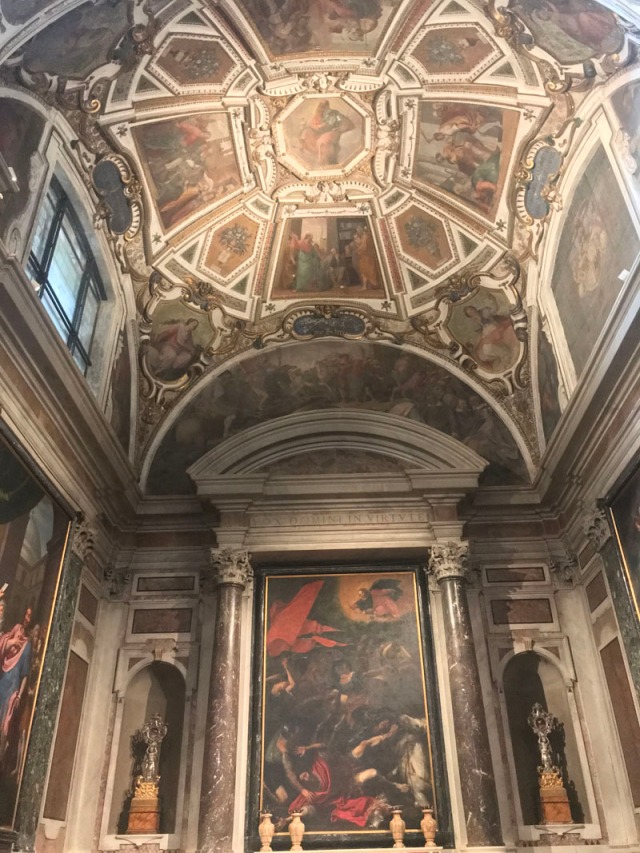
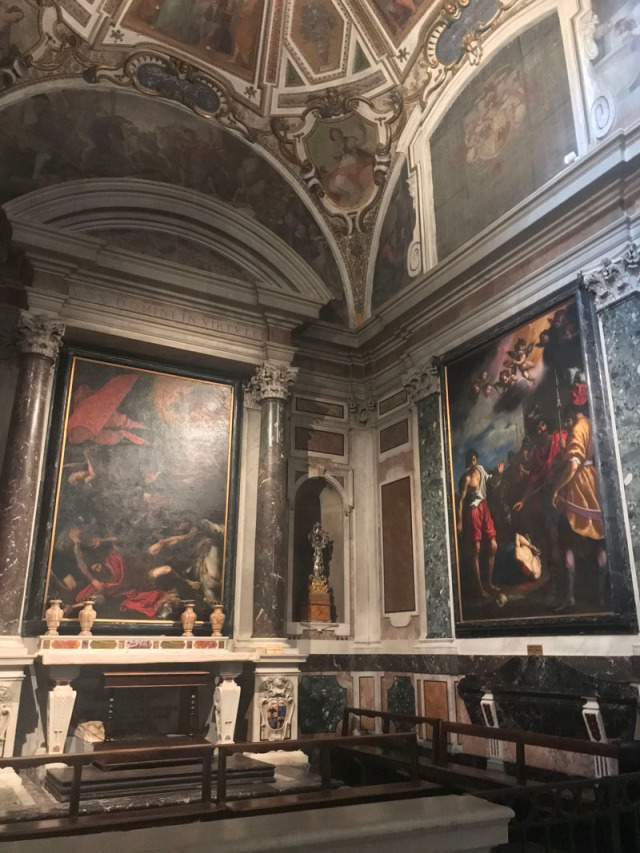
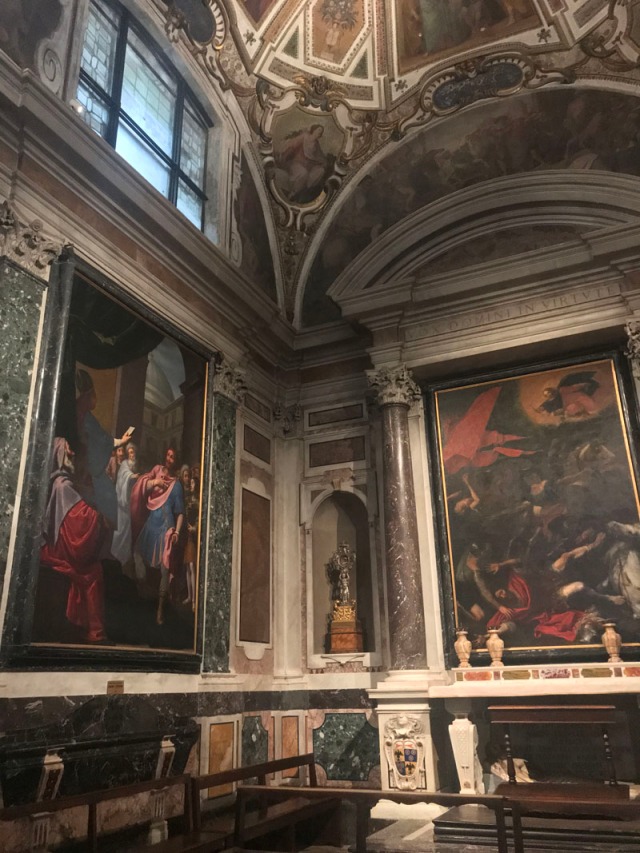
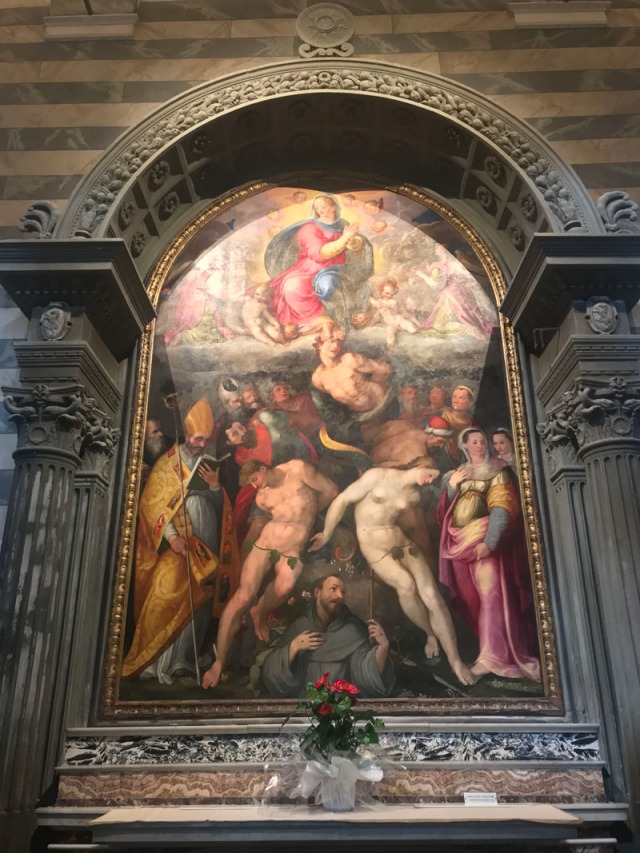
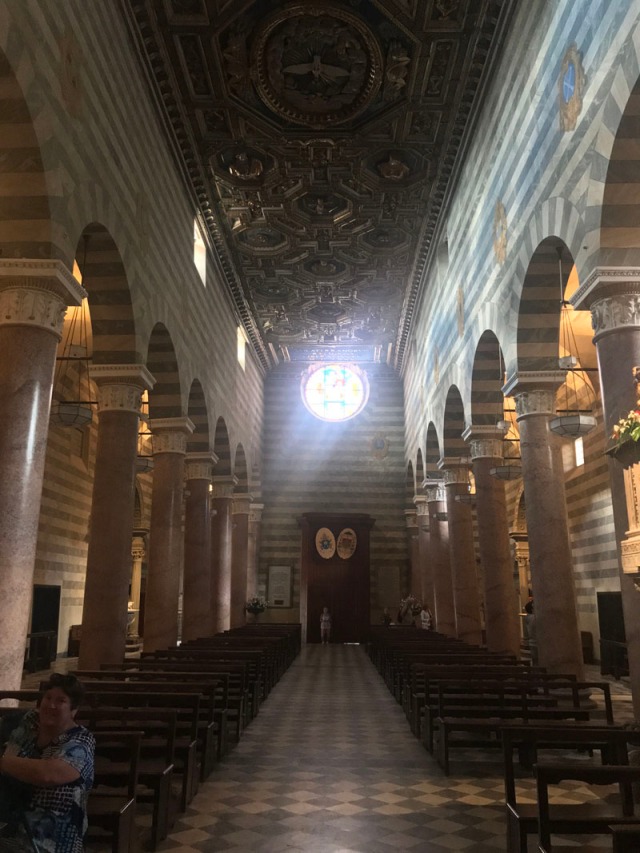
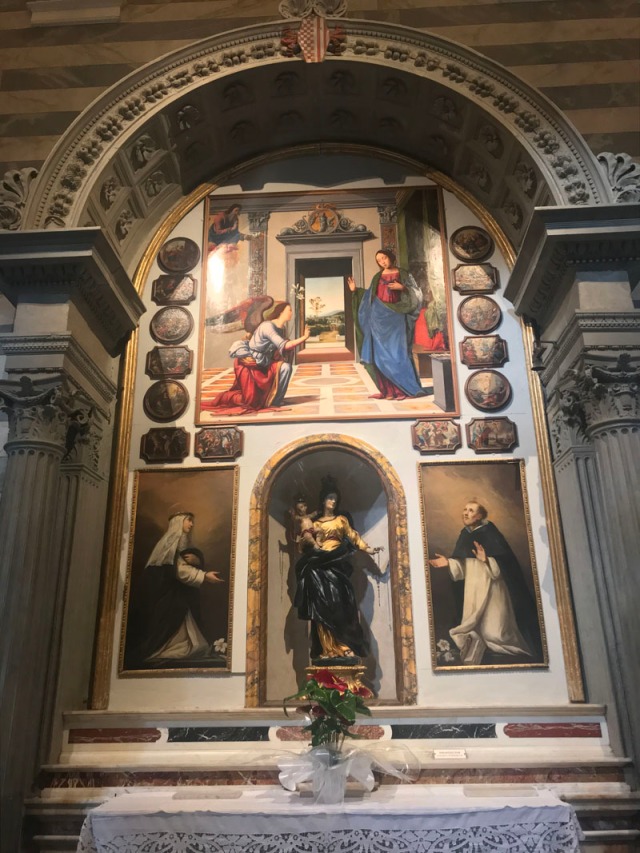
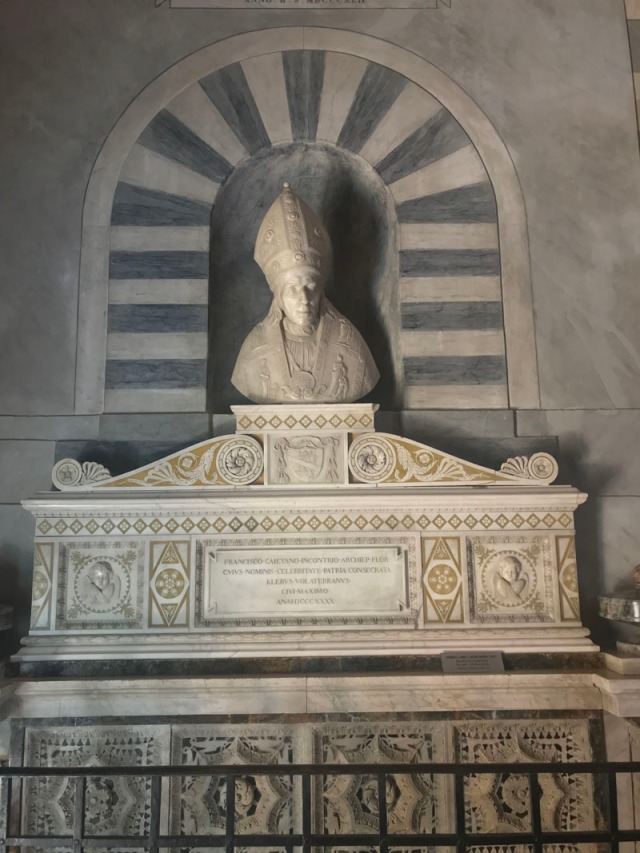
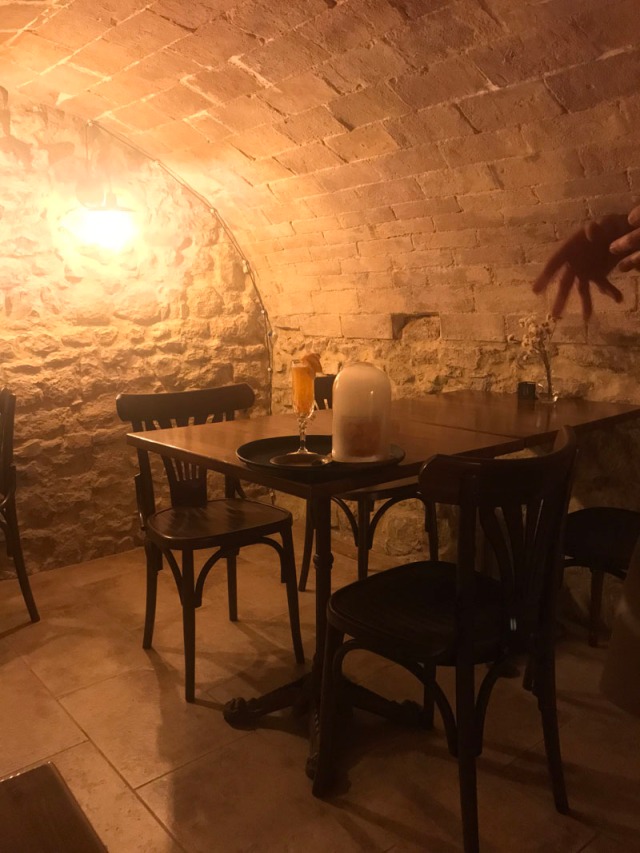
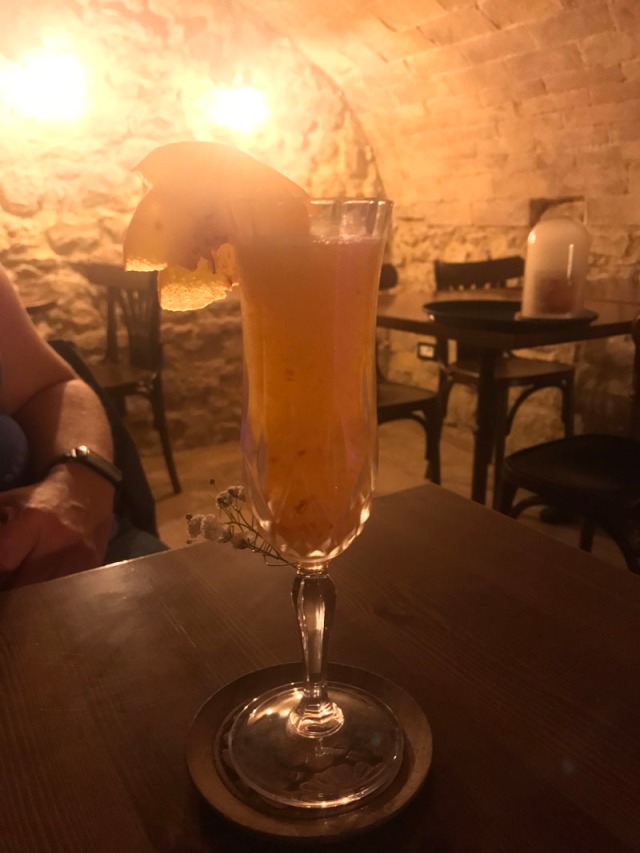
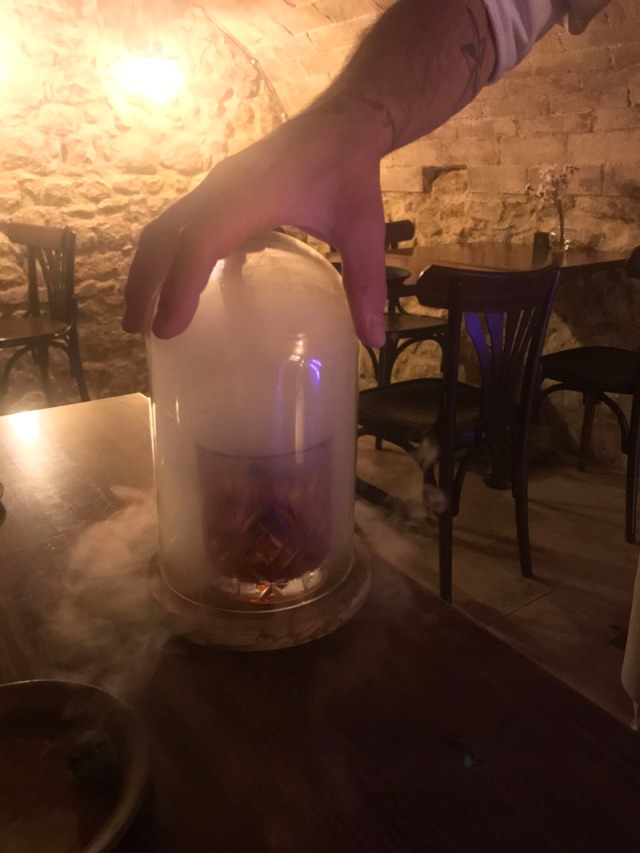
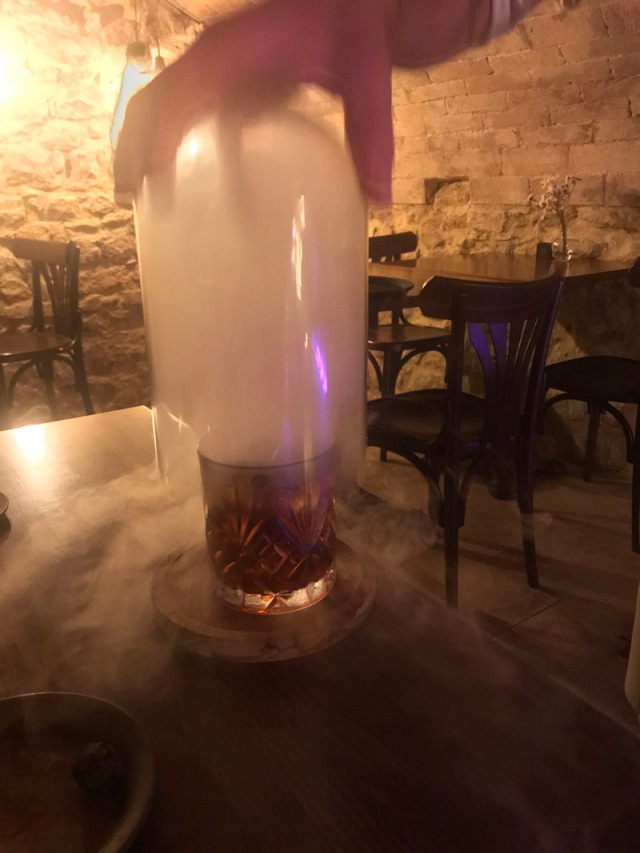
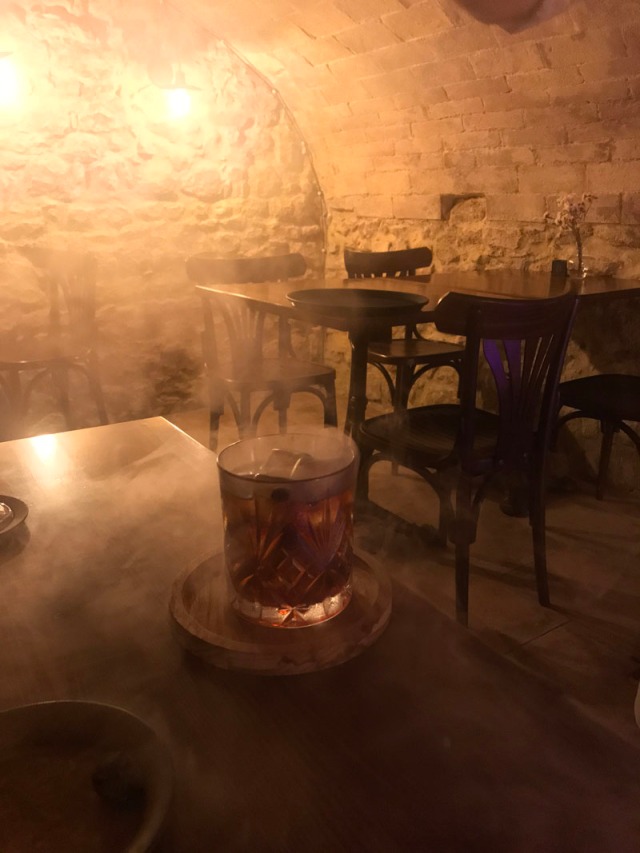
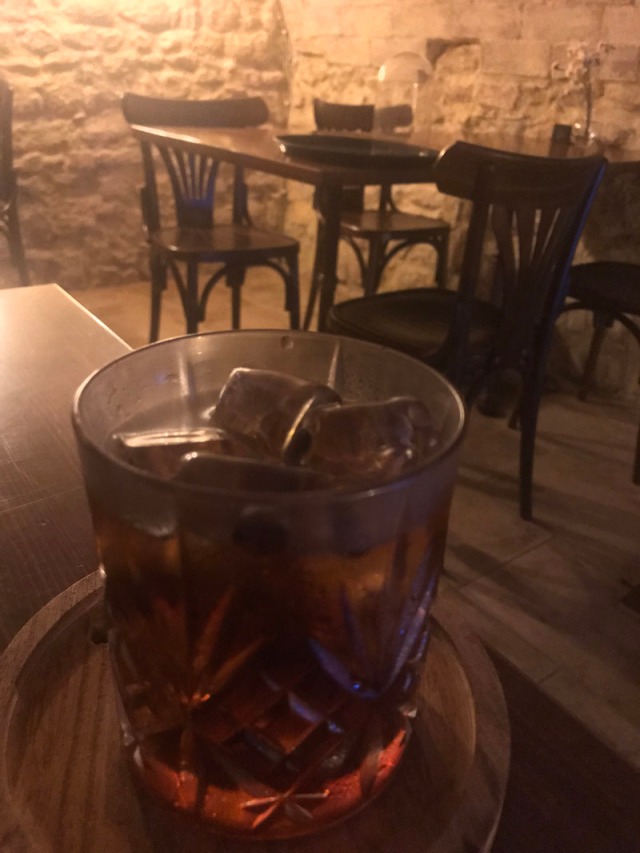

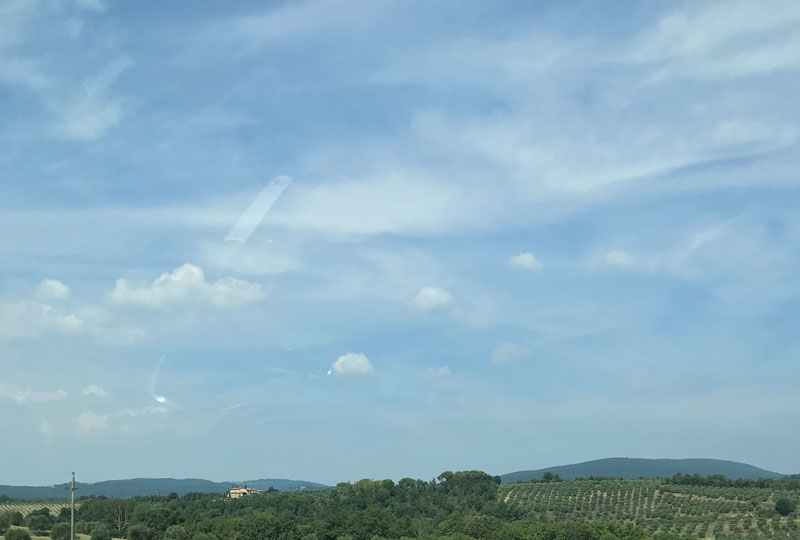

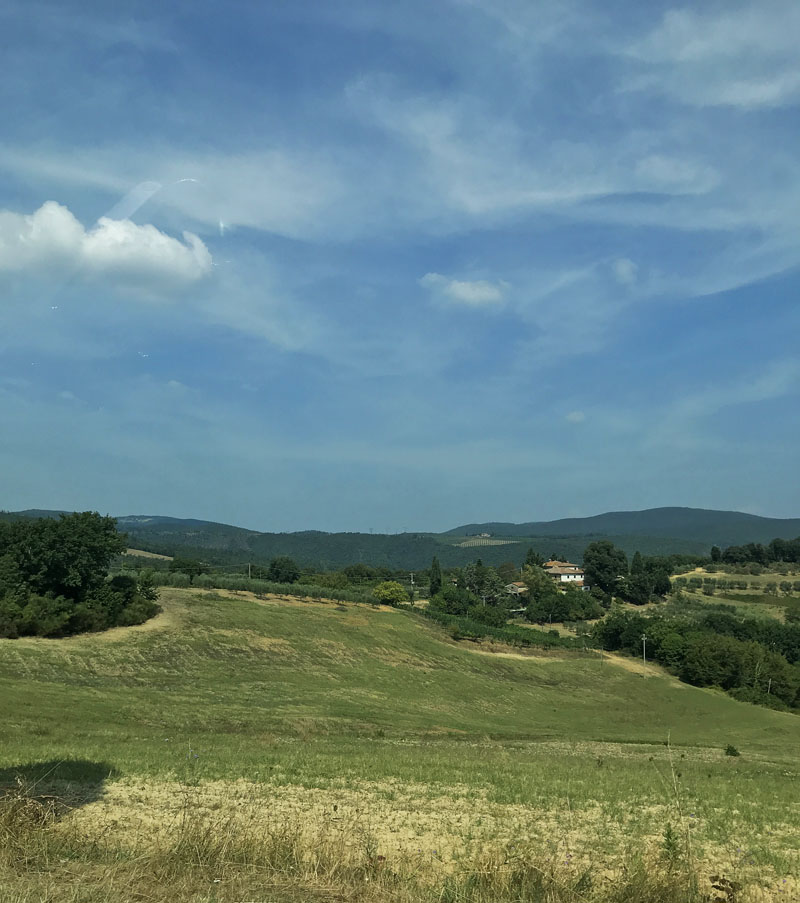
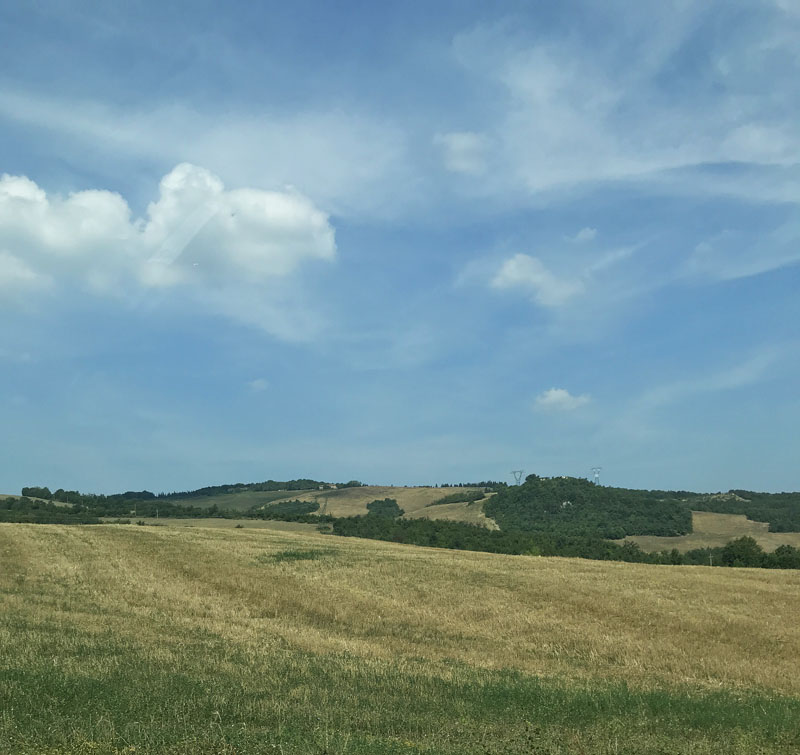
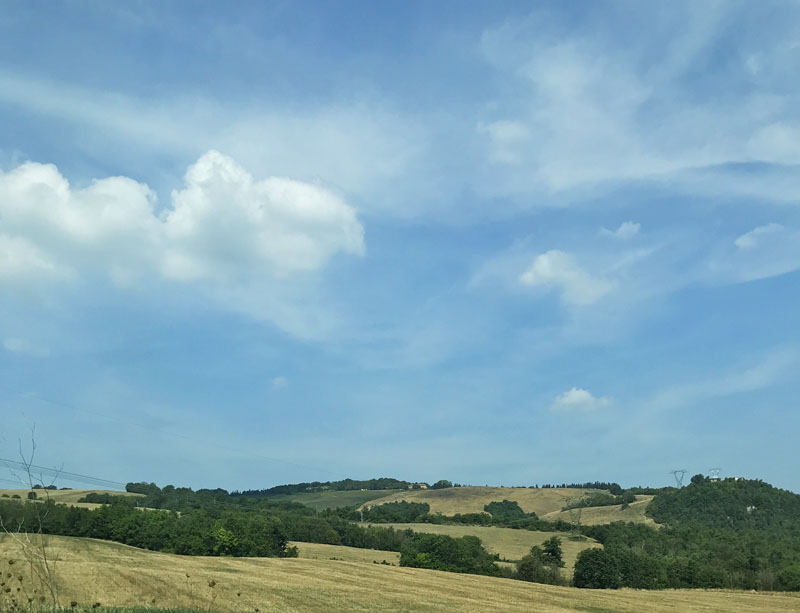
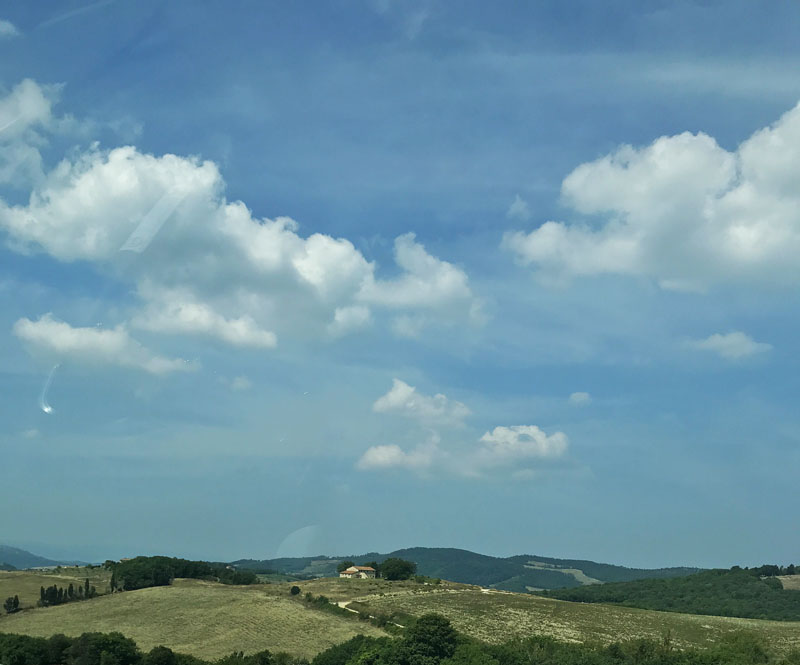
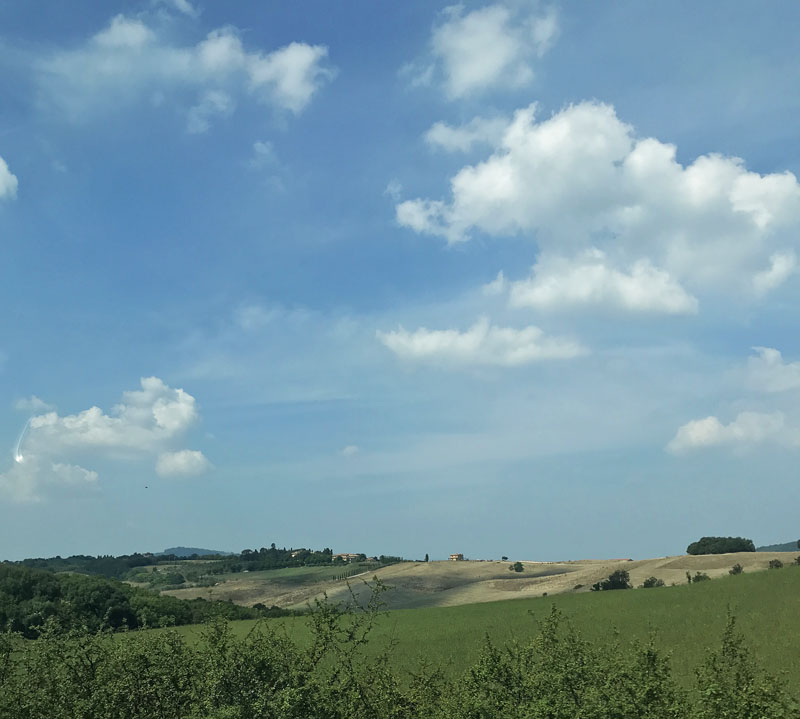
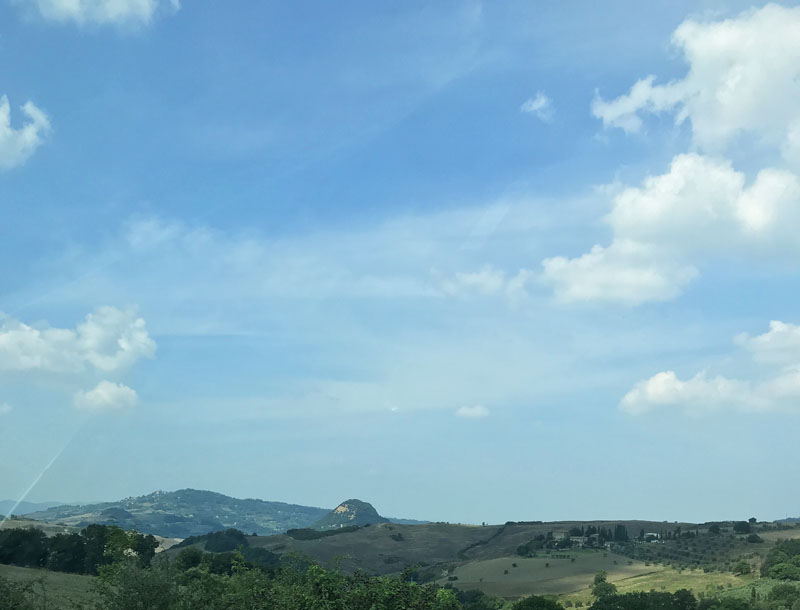
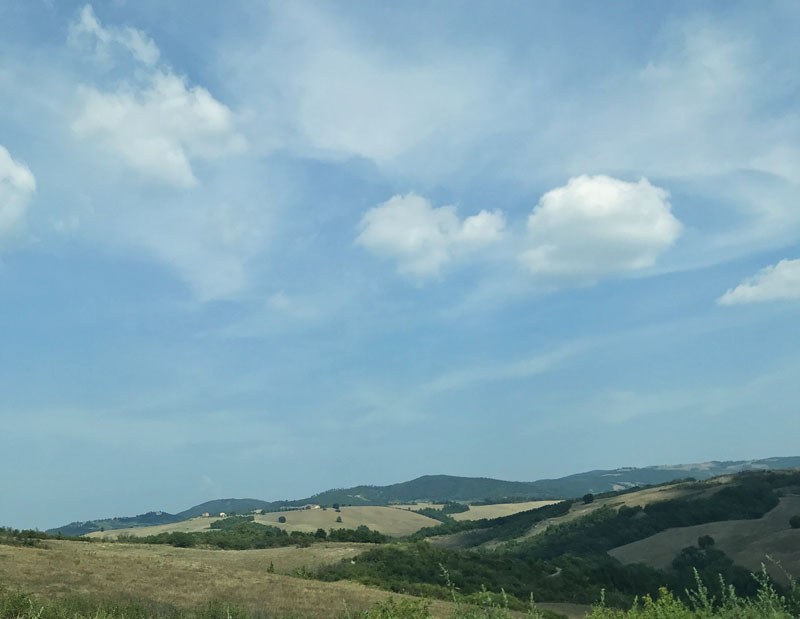
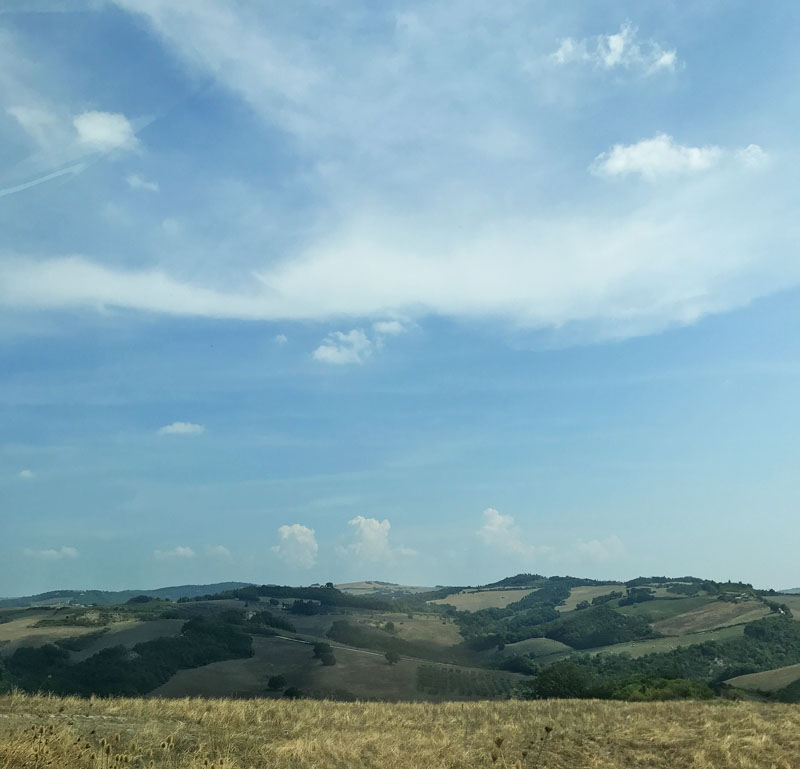
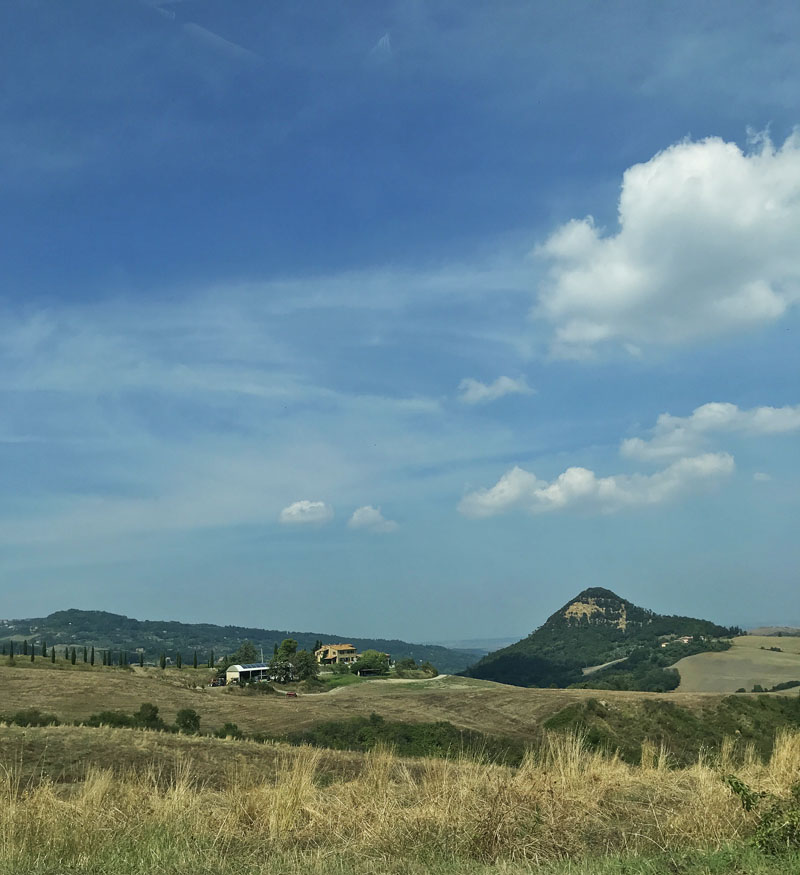
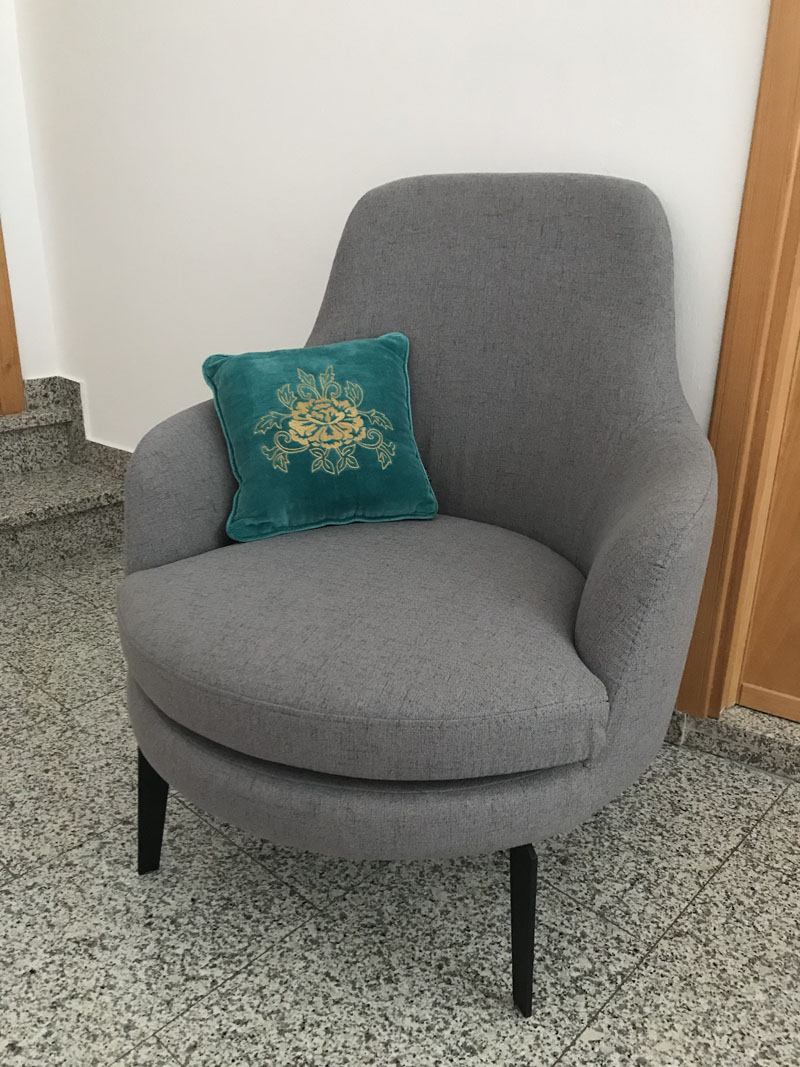
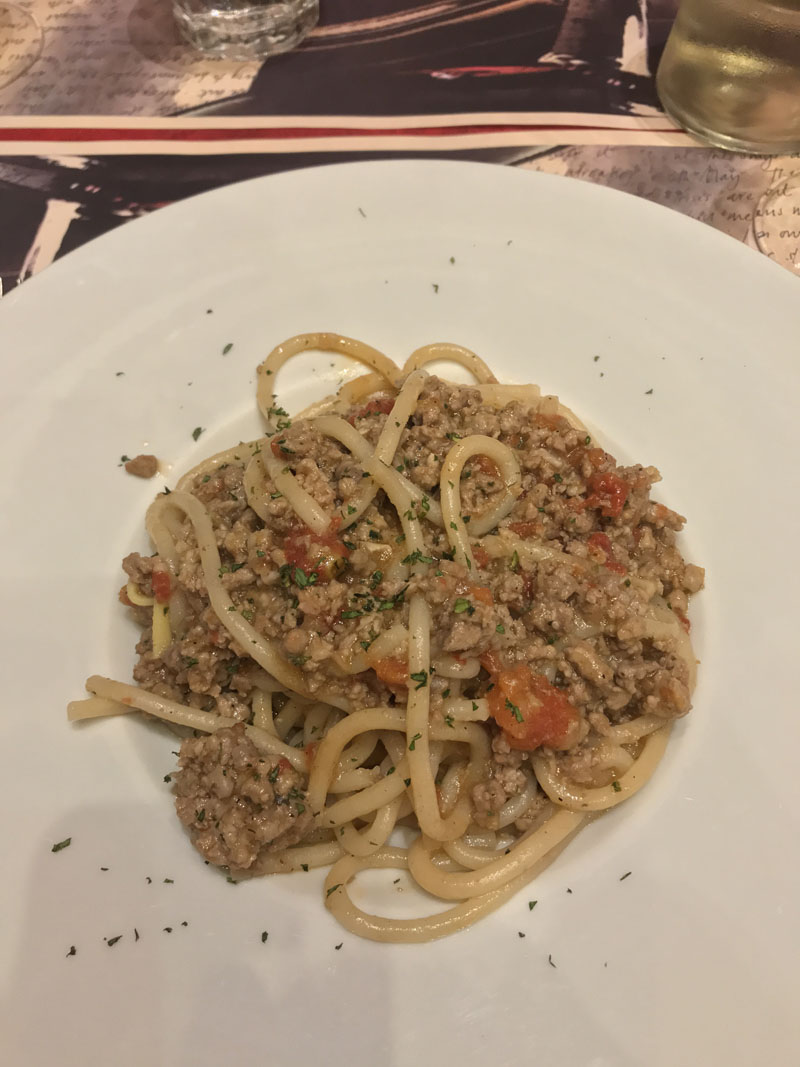
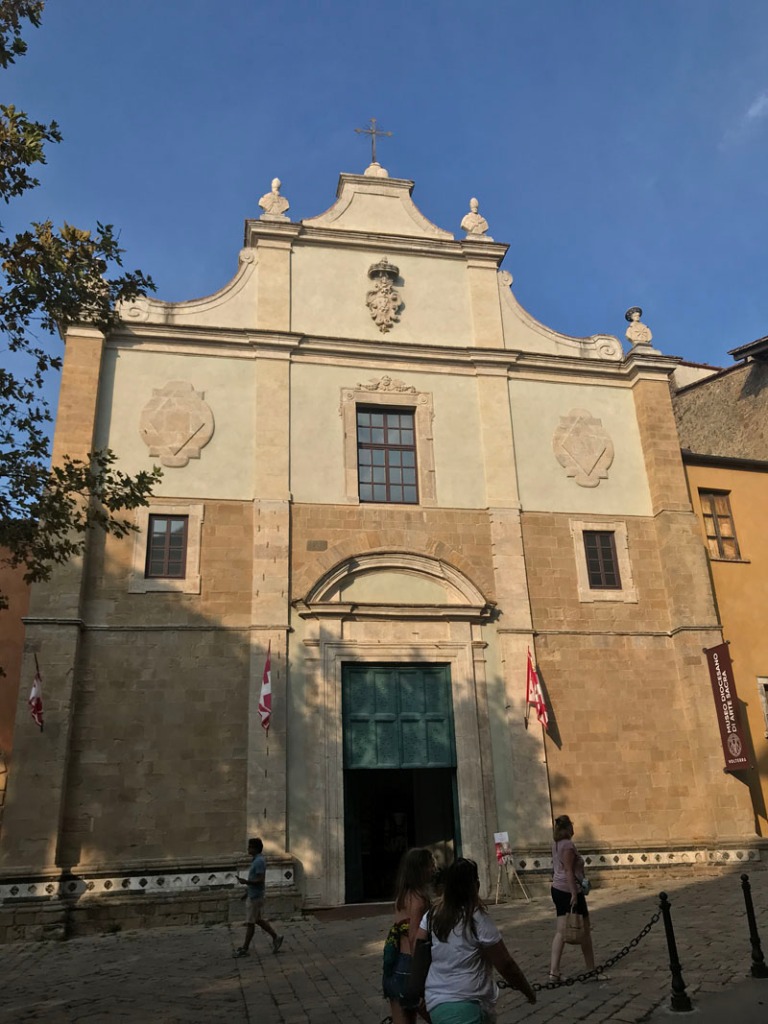
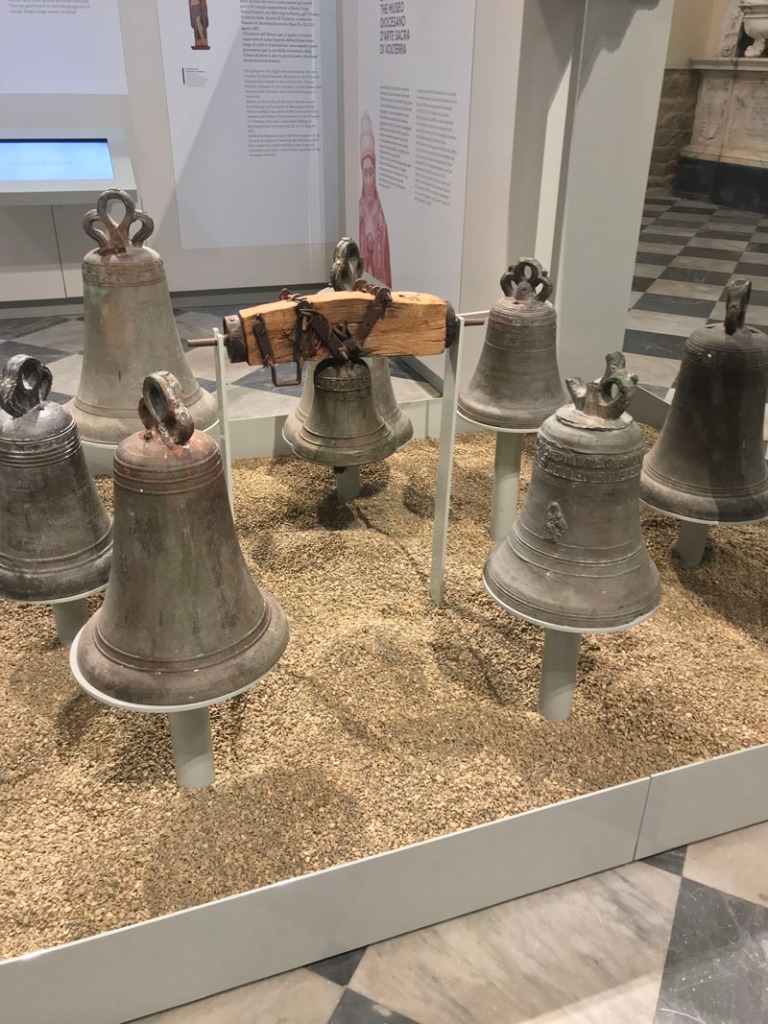
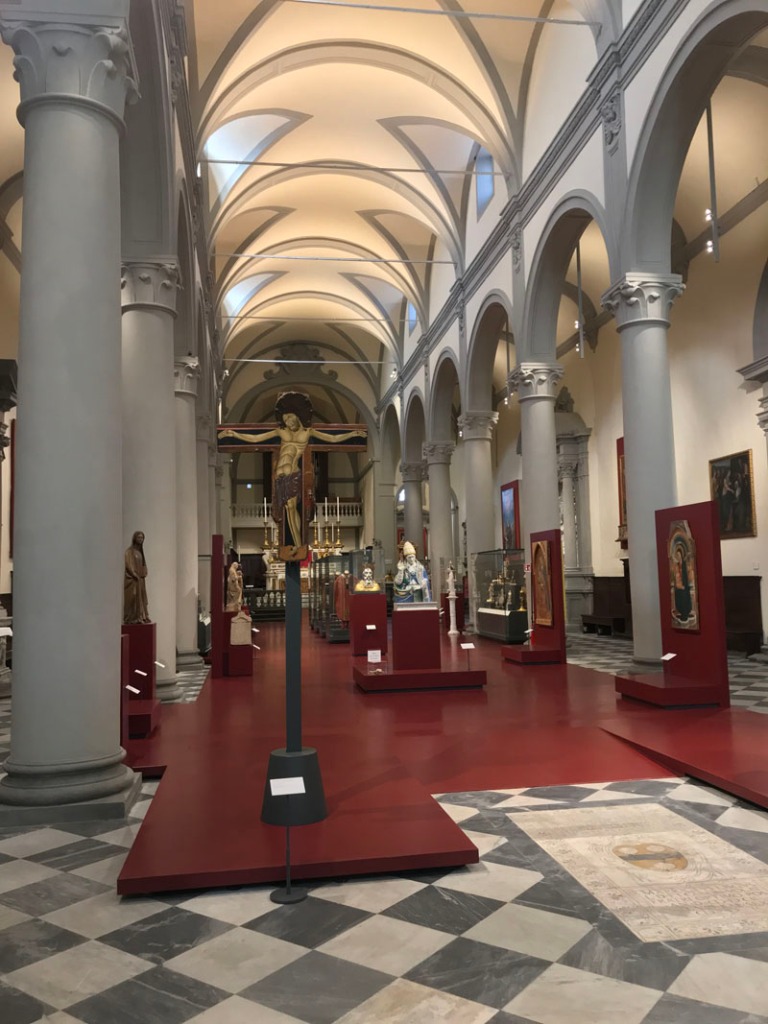
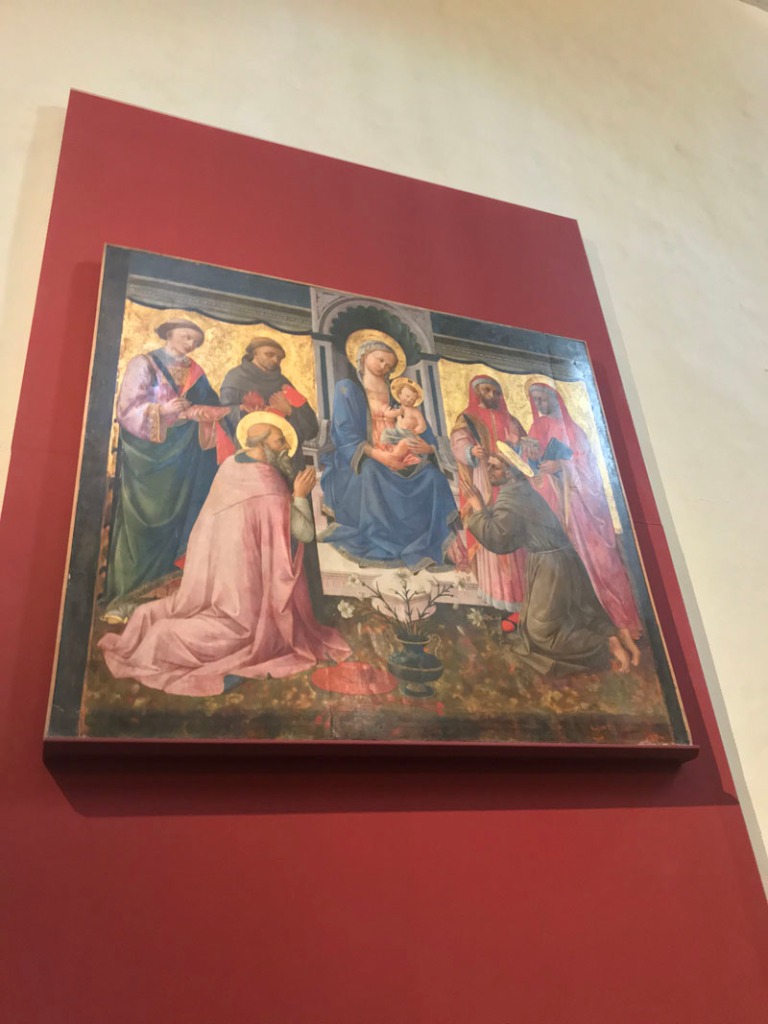
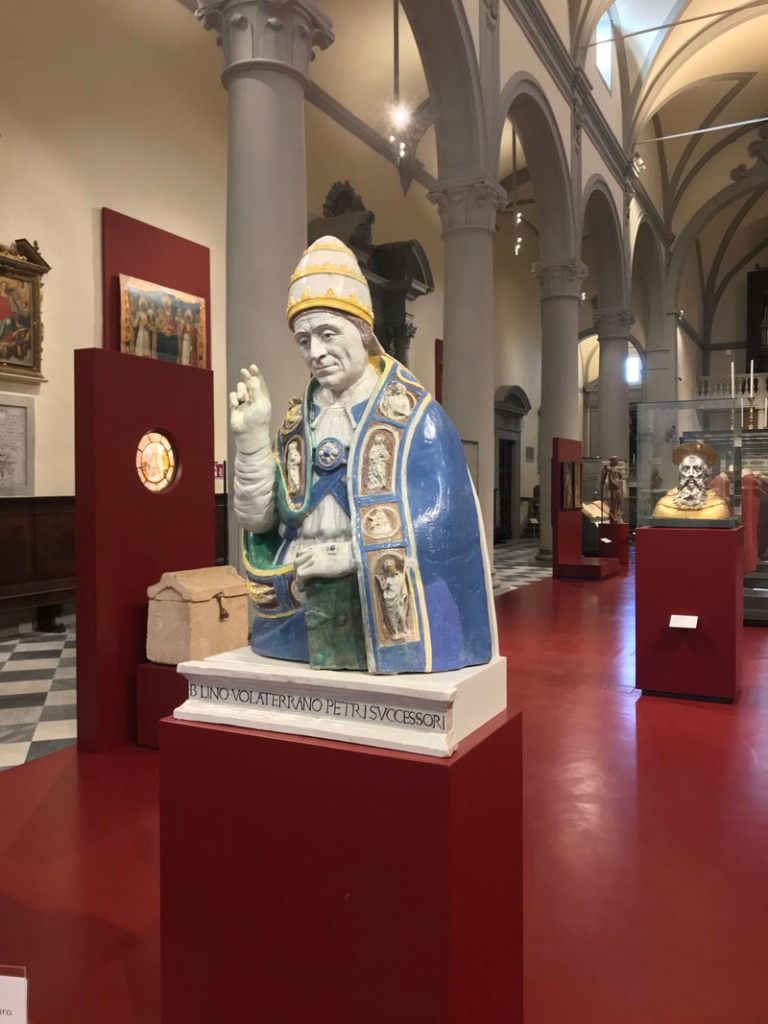
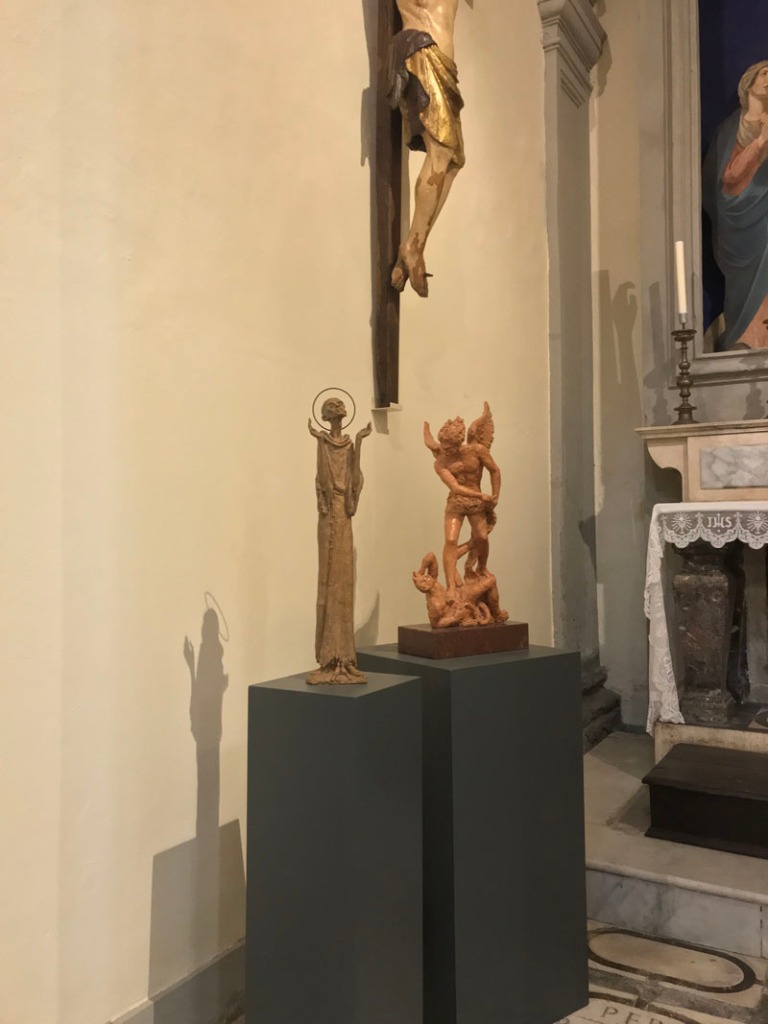
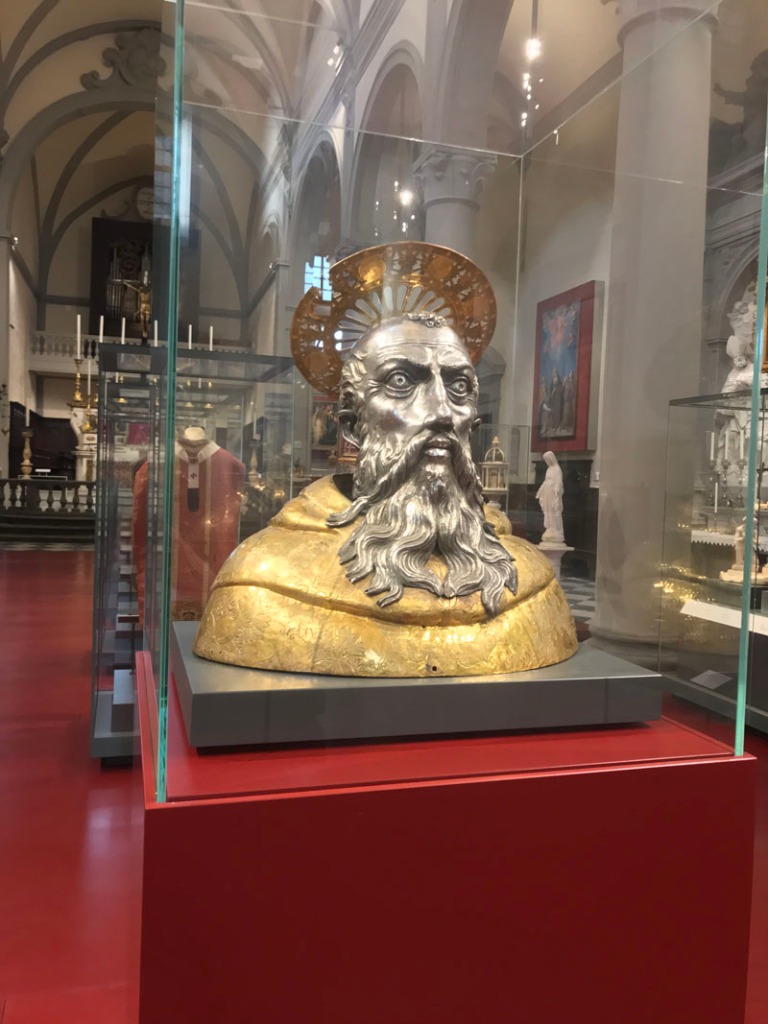
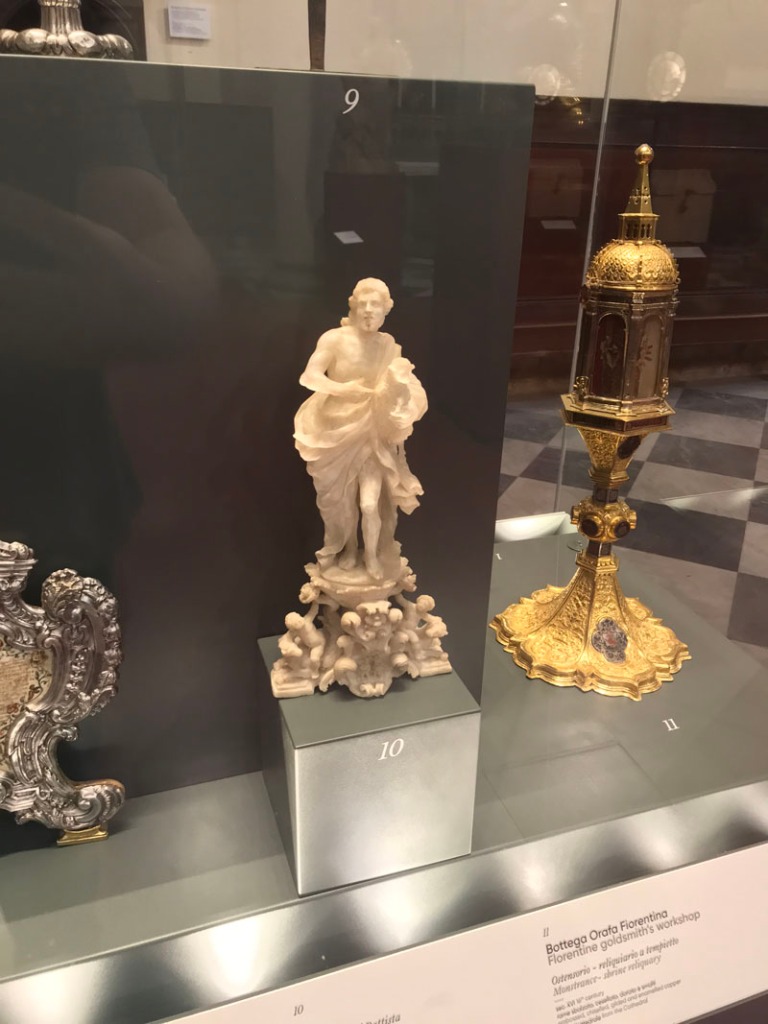
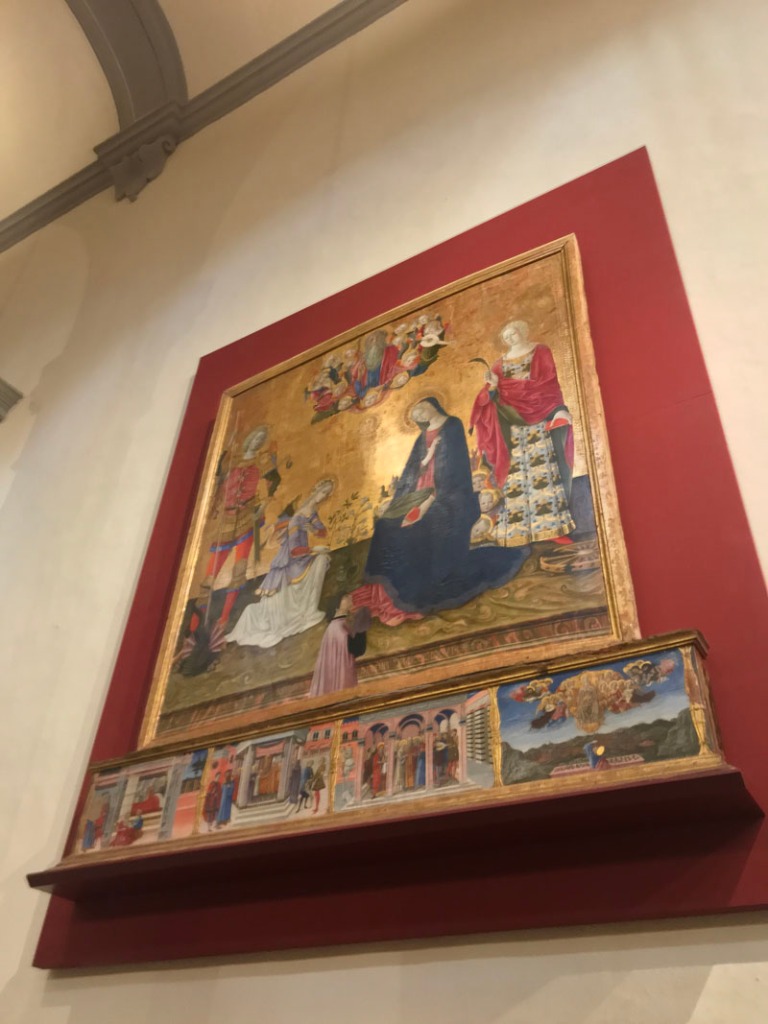
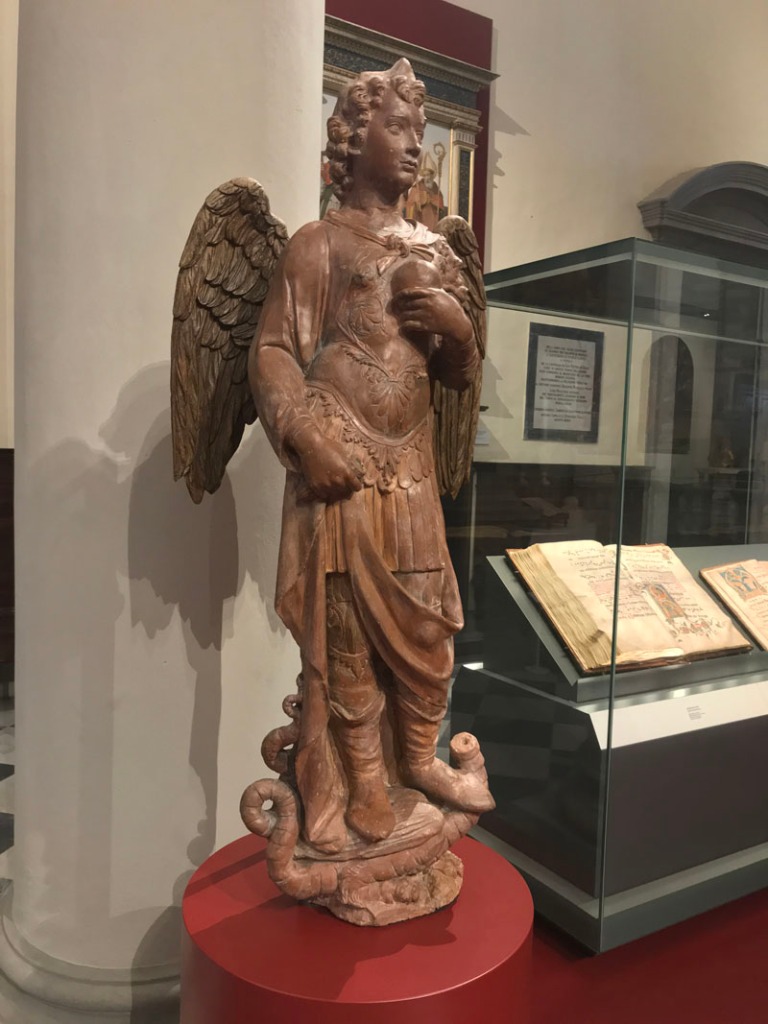

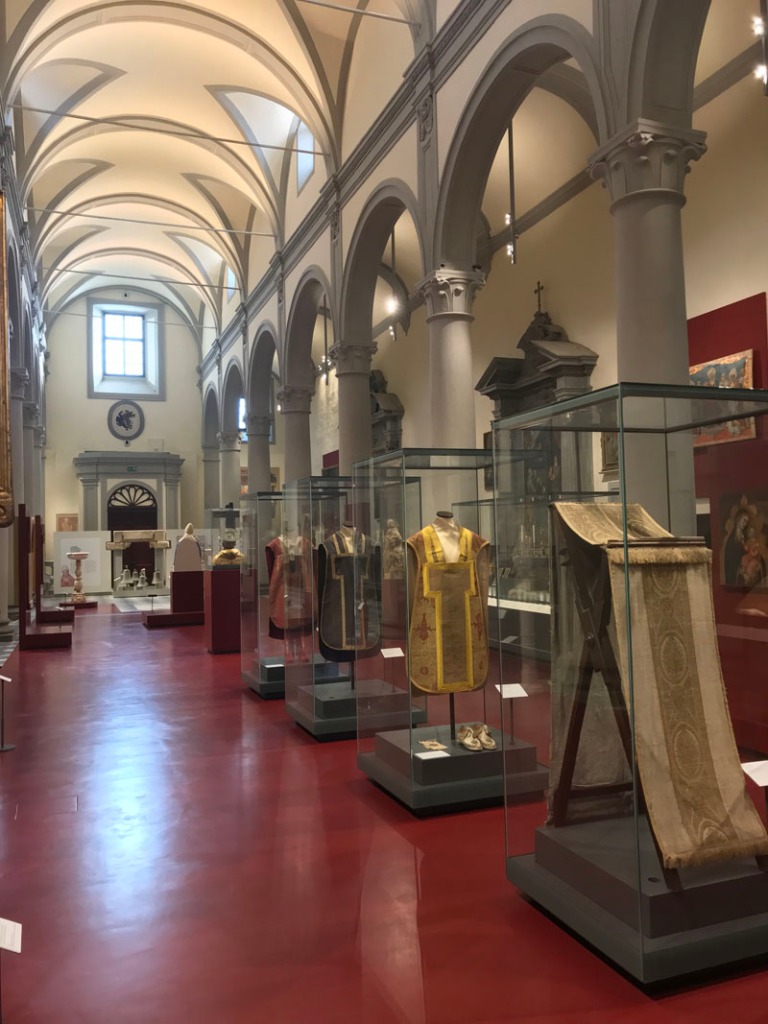
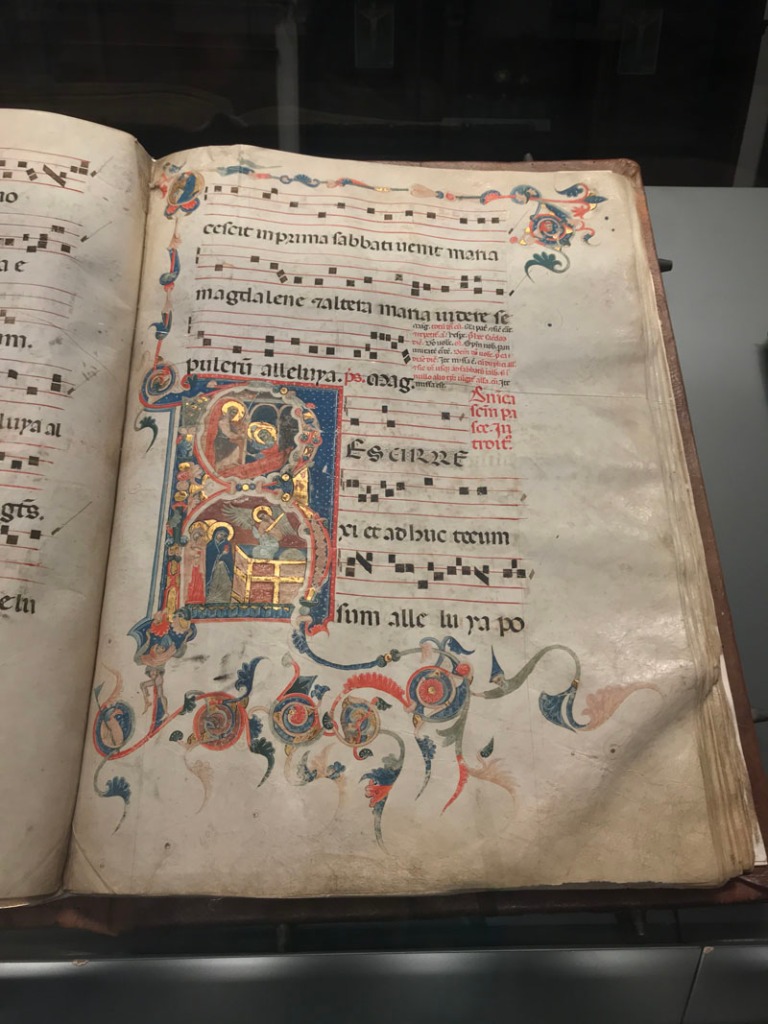
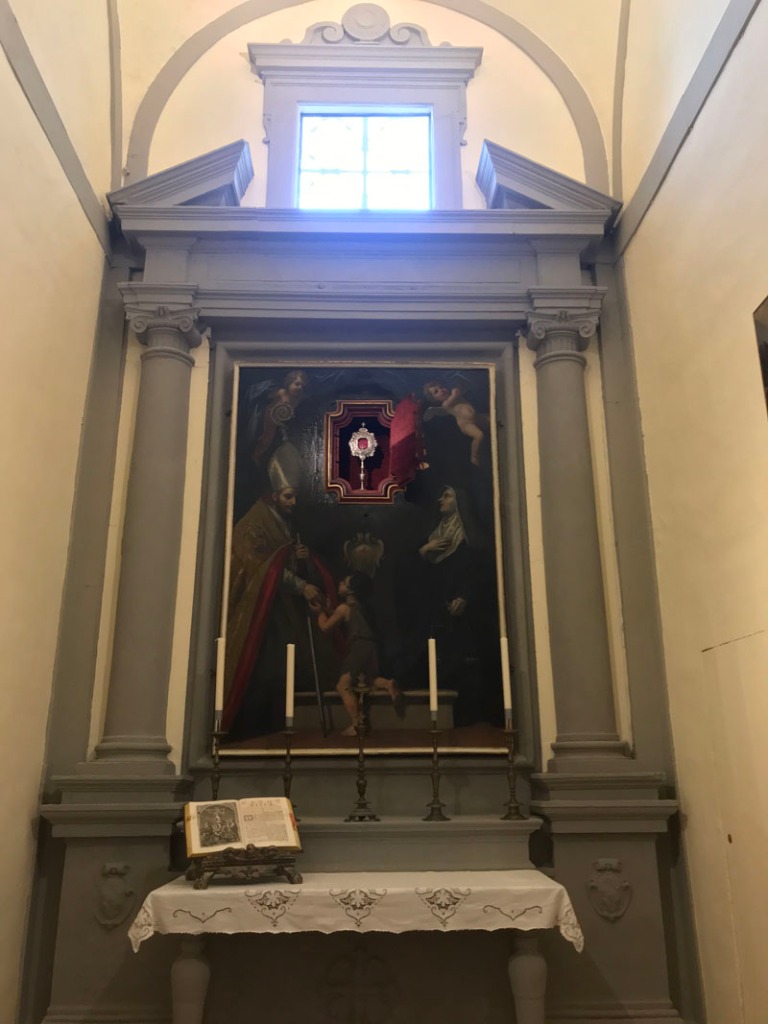
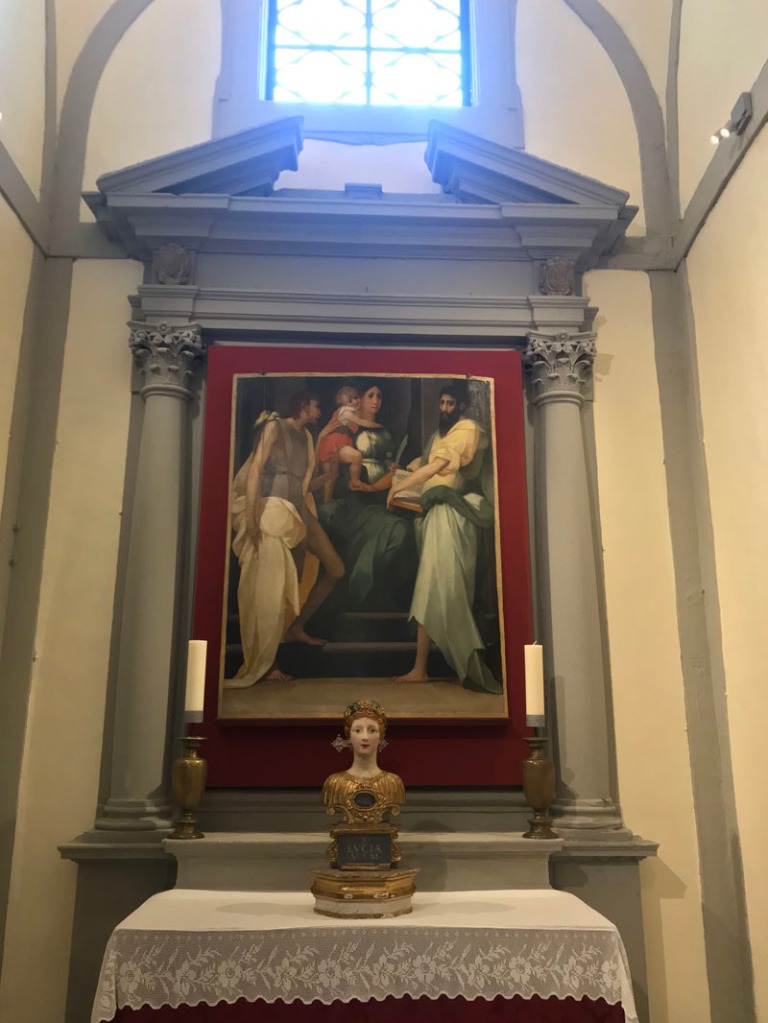
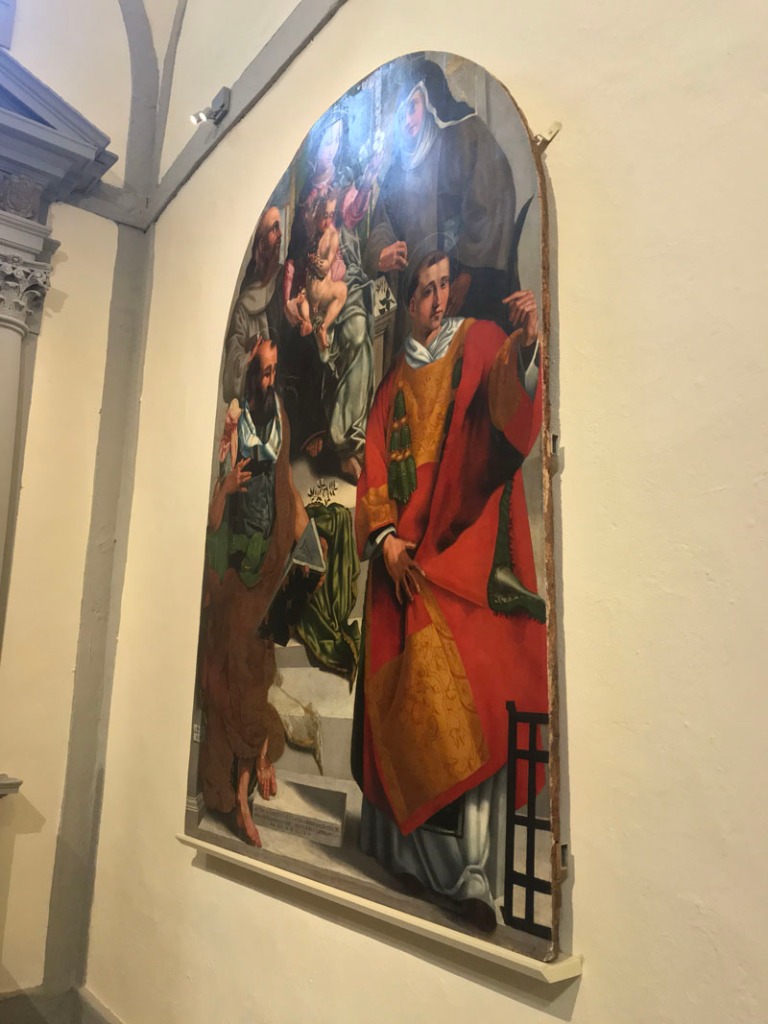
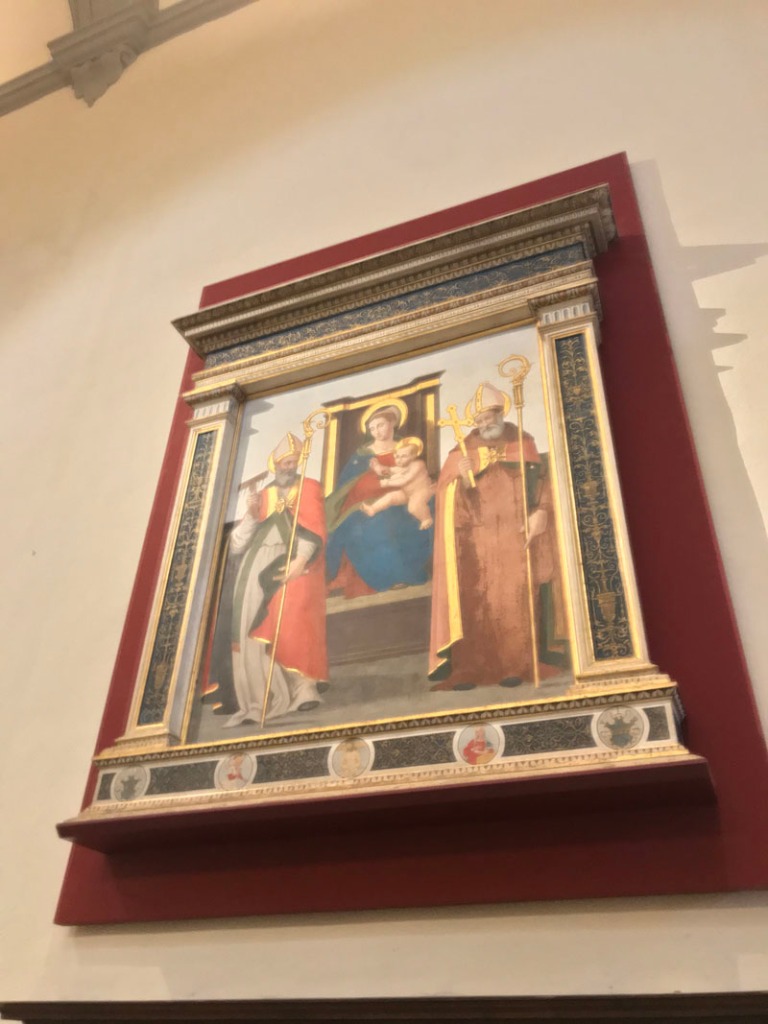
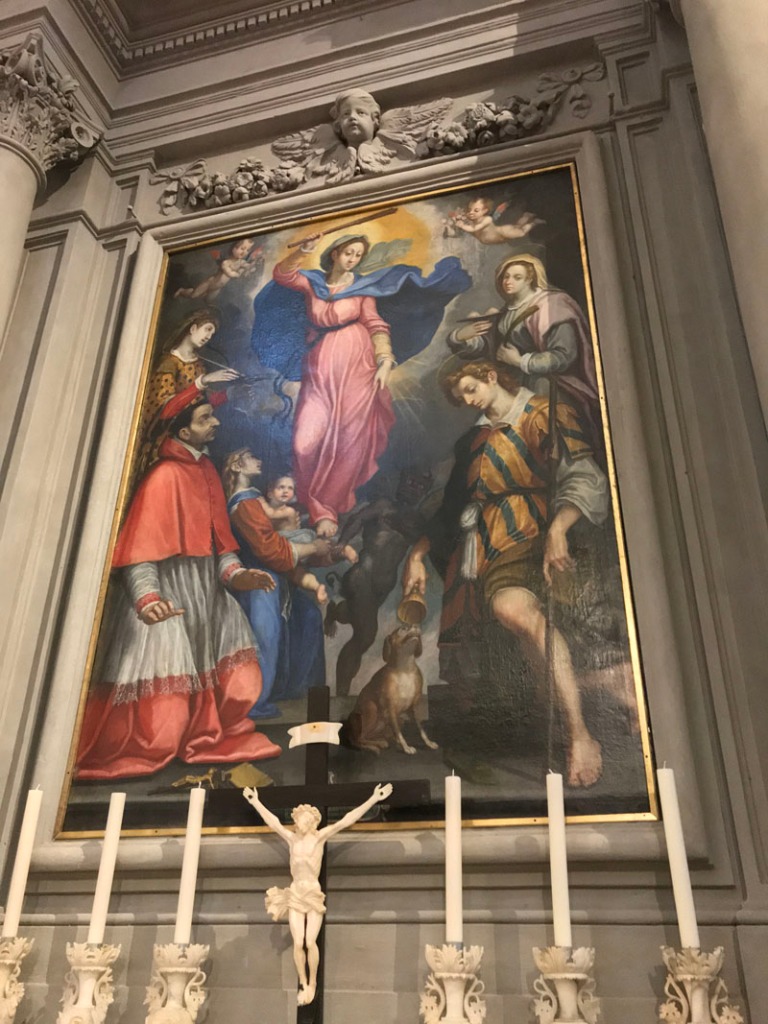
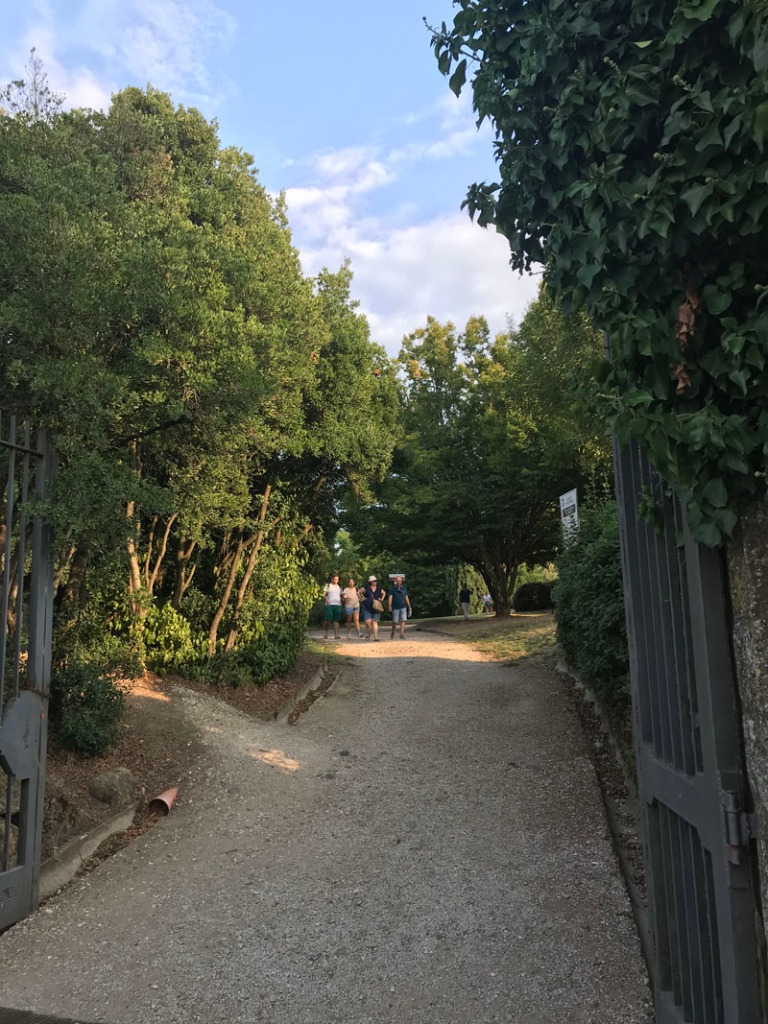
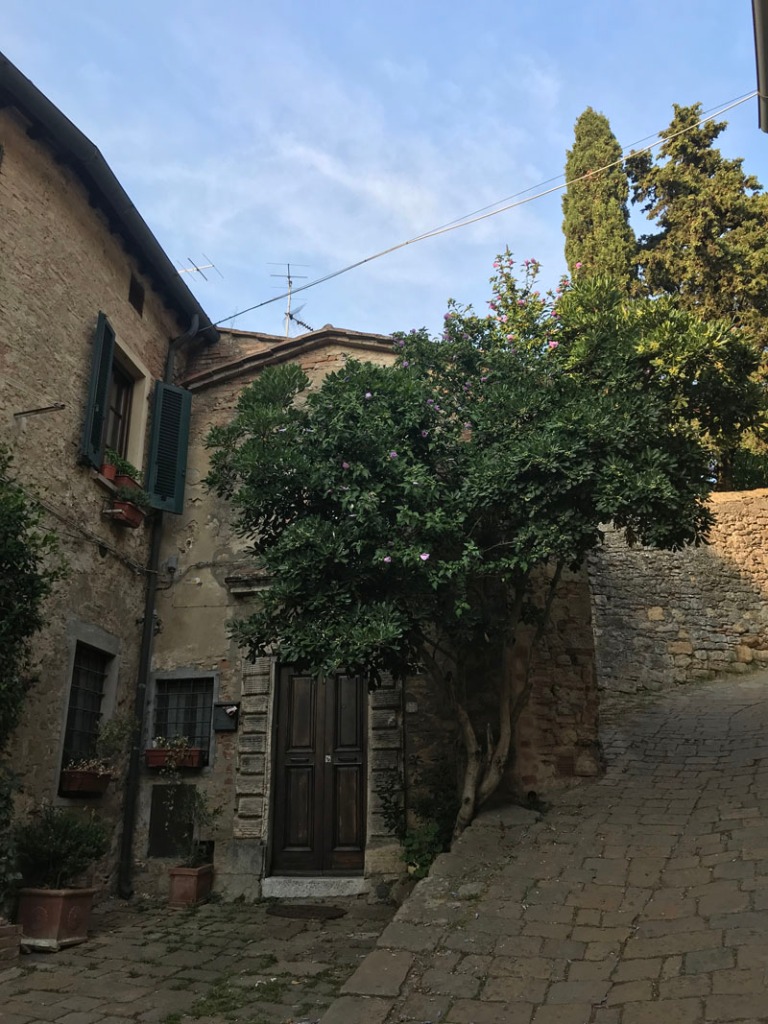
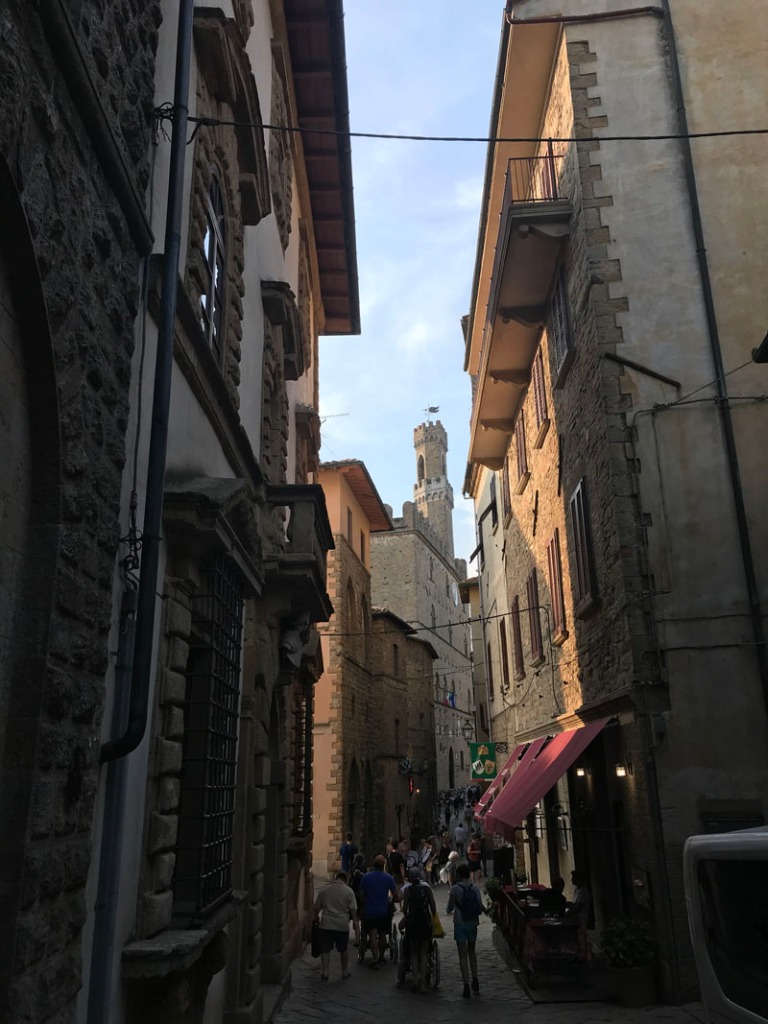
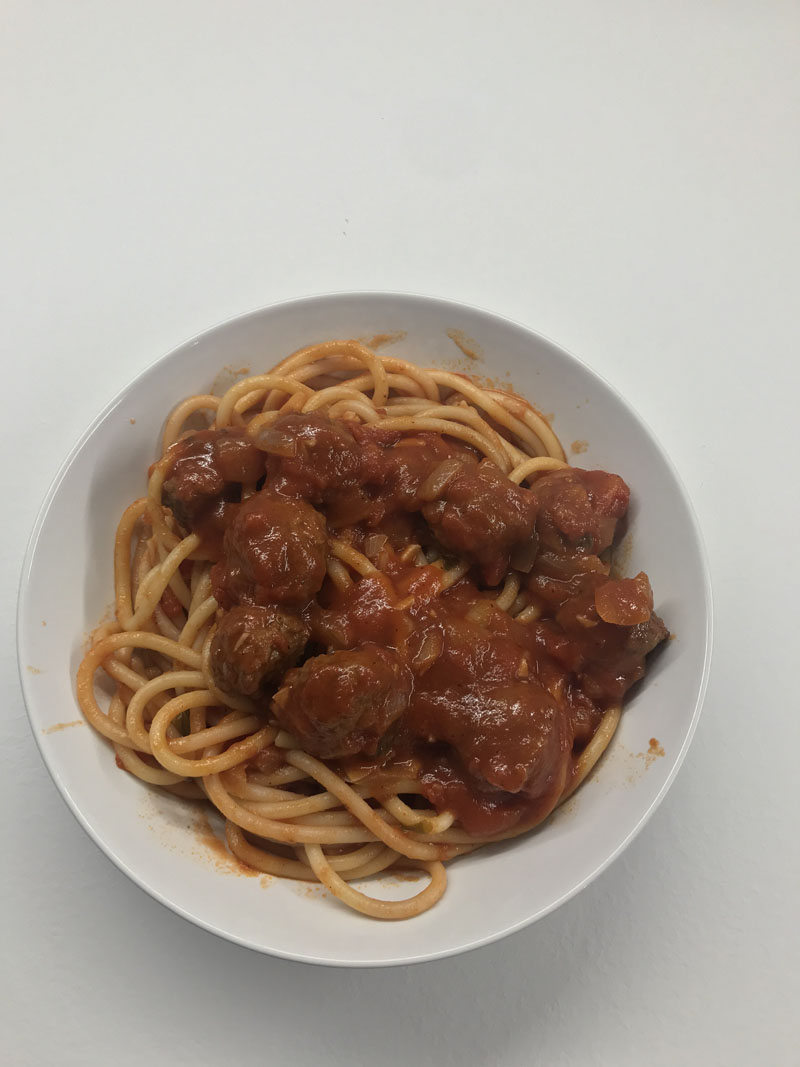
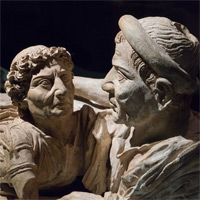 Volterra (Velathri, in the Etruscan language) was one of the twelve principal cities of the Etruscan League. It was a cultural cradle while Rome was still an upstart village on the banks of the Tiber. (I still have mad love for you, Rome!). In fact, it is Tuscany’s oldest continuously inhabited town.
Volterra (Velathri, in the Etruscan language) was one of the twelve principal cities of the Etruscan League. It was a cultural cradle while Rome was still an upstart village on the banks of the Tiber. (I still have mad love for you, Rome!). In fact, it is Tuscany’s oldest continuously inhabited town. It is one of the principal centres for production of alabaster works in Europe, if not the principal centre. It was for centuries, and then trade fell off. It picked back up again in the eighteenth century, from which time Volterra has ruled the roost! Check out
It is one of the principal centres for production of alabaster works in Europe, if not the principal centre. It was for centuries, and then trade fell off. It picked back up again in the eighteenth century, from which time Volterra has ruled the roost! Check out 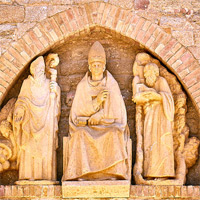 The second Pope, St. Linus, was born in Volterra. His cathederal is one of the few places we haven’t visited yet, as it was being renovated. It may have reopened by now, so hopefully we’ll take a look when we get over there.
The second Pope, St. Linus, was born in Volterra. His cathederal is one of the few places we haven’t visited yet, as it was being renovated. It may have reopened by now, so hopefully we’ll take a look when we get over there.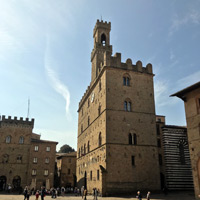 The main building of office in Volterra is still the 13th century Palazzo dei Priori, in the main square. It is the oldest town hall in Tuscany. So enamoured were the Medici by its design, that it was ‘culturally appropriated’, in that they based their Palazzo Vecchio in Florence on it. It’s still used for officialdom, but you can also visit a museum and the bell-tower there.
The main building of office in Volterra is still the 13th century Palazzo dei Priori, in the main square. It is the oldest town hall in Tuscany. So enamoured were the Medici by its design, that it was ‘culturally appropriated’, in that they based their Palazzo Vecchio in Florence on it. It’s still used for officialdom, but you can also visit a museum and the bell-tower there. If you were to stand beside the bell in the Palazzo dei Priori, you would be about 560 meters above sea-level, making Volterra Tuscany’s highest hilltown. I can see our house from here!
If you were to stand beside the bell in the Palazzo dei Priori, you would be about 560 meters above sea-level, making Volterra Tuscany’s highest hilltown. I can see our house from here!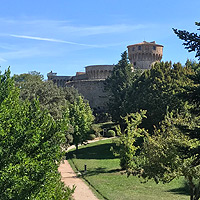 There is a Medicean fortress that dominates the south of the town. There are only three ways you can visit it, however: (1) go to dinner there; (2) visit someone housed there; or (3) be a very naughty boy and earn a prison sentence. Yes, it is, in fact, a medium-security prison. However, it is a very progressive one. Eight or so times a year, you can book yourself in to attend the so-called
There is a Medicean fortress that dominates the south of the town. There are only three ways you can visit it, however: (1) go to dinner there; (2) visit someone housed there; or (3) be a very naughty boy and earn a prison sentence. Yes, it is, in fact, a medium-security prison. However, it is a very progressive one. Eight or so times a year, you can book yourself in to attend the so-called 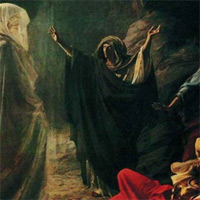 The progenitor of your typical medieval witches was also reputed for have been born in Volterra, supposedly on August the 13th, 1313. Her name was Aradia. Read more about her
The progenitor of your typical medieval witches was also reputed for have been born in Volterra, supposedly on August the 13th, 1313. Her name was Aradia. Read more about her 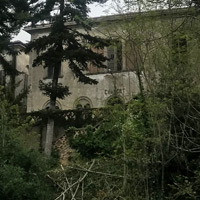 Volterra was home to a another town of sorts, on its outskirts. During its dismal apex, it housed as many people as the walled town itself did – about 6,000. It was a psychiatric hospital. It began life as an institution which genuinely sought to help the mentally infirm, but became something much more insidious. You can read more about it
Volterra was home to a another town of sorts, on its outskirts. During its dismal apex, it housed as many people as the walled town itself did – about 6,000. It was a psychiatric hospital. It began life as an institution which genuinely sought to help the mentally infirm, but became something much more insidious. You can read more about it  One of the most famous and progressive scenes depicting the Deposition of Christ was painted by Rosso Fiorentino, and originally housed in the cathedral of Volterra. It is now in the town’s art museum (pinacoteca), along with many other amazing pre-Renaissance pieces. It features, unusually, a red-headed Judas (bottom right).
One of the most famous and progressive scenes depicting the Deposition of Christ was painted by Rosso Fiorentino, and originally housed in the cathedral of Volterra. It is now in the town’s art museum (pinacoteca), along with many other amazing pre-Renaissance pieces. It features, unusually, a red-headed Judas (bottom right). One of Volterra’s greatest treasures is on public display, and acts as one of the entrances to the walled town: the Porta all’Arco. Part of it dates back to centuries BC. During WWII, the German’s threatened to destroy the gate, to impede the approaching allies. The remaining townsfolk (many of whom where women and children by then) begged the Germans to give them time instead to stop it up with rocks. They were given 24 hours. Incredibly they did it in time (it’s a big gate, with added depth) by forming a human conveyor belt, and so the gate remains intact today.
One of Volterra’s greatest treasures is on public display, and acts as one of the entrances to the walled town: the Porta all’Arco. Part of it dates back to centuries BC. During WWII, the German’s threatened to destroy the gate, to impede the approaching allies. The remaining townsfolk (many of whom where women and children by then) begged the Germans to give them time instead to stop it up with rocks. They were given 24 hours. Incredibly they did it in time (it’s a big gate, with added depth) by forming a human conveyor belt, and so the gate remains intact today. Most recently, Volterra has seen movie and TV sets come and go, and been associated with modern young-adult urban fantasy. Some scenes from the live-action version of Full Metal Alchemist were shot here, as well as much of Season 3 of The Medicis (still awaiting broadcast in Ireland, I think). Most famously, Volterra has been associated with Stephanie Meyer’s Twilight Trilogy, with some of the second book being set here. Sadly, only a few scenes of the film where shot in Volterra, with the majority of the outdoor stuff shot instead in Montepulciano, 70 miles away.
Most recently, Volterra has seen movie and TV sets come and go, and been associated with modern young-adult urban fantasy. Some scenes from the live-action version of Full Metal Alchemist were shot here, as well as much of Season 3 of The Medicis (still awaiting broadcast in Ireland, I think). Most famously, Volterra has been associated with Stephanie Meyer’s Twilight Trilogy, with some of the second book being set here. Sadly, only a few scenes of the film where shot in Volterra, with the majority of the outdoor stuff shot instead in Montepulciano, 70 miles away.